Take a Deep breathe, Enjoy !
The Living World
The Living World is a unique and spectacular marvel, from highest Mountain of Everest through the Magical flow of Victoria to the Indomitable Scenery of Amazon...
Nature & Landmarks

Victoria Falls
Victoria Falls is a waterfall on the Zambezi River in southern Africa, which provides habitat for several unique species of plants and animals. It is located on the border between Zambia and Zimbabwe and is considered to be one of the world's largest waterfalls due to its width of 1,708 metres.

Bermuda Traingle
The Bermuda Triangle is a mythical section of the Atlantic Ocean roughly bounded by Miami, Bermuda and Puerto Rico where dozens of ships and airplanes have disappeared. Unexplained circumstances surround some of these accidents, including one in which the pilots of a squadron of U.S. Navy bombers became disoriented while flying over the area; the planes were never found. Other boats and planes have seemingly vanished from the area in good weather without even radioing distress messages. But although myriad fanciful theories have been proposed regarding the Bermuda Triangle, none of them prove that mysterious disappearances occur more frequently there than in other well-traveled sections of the ocean. In fact, people navigate the area every day without incident.
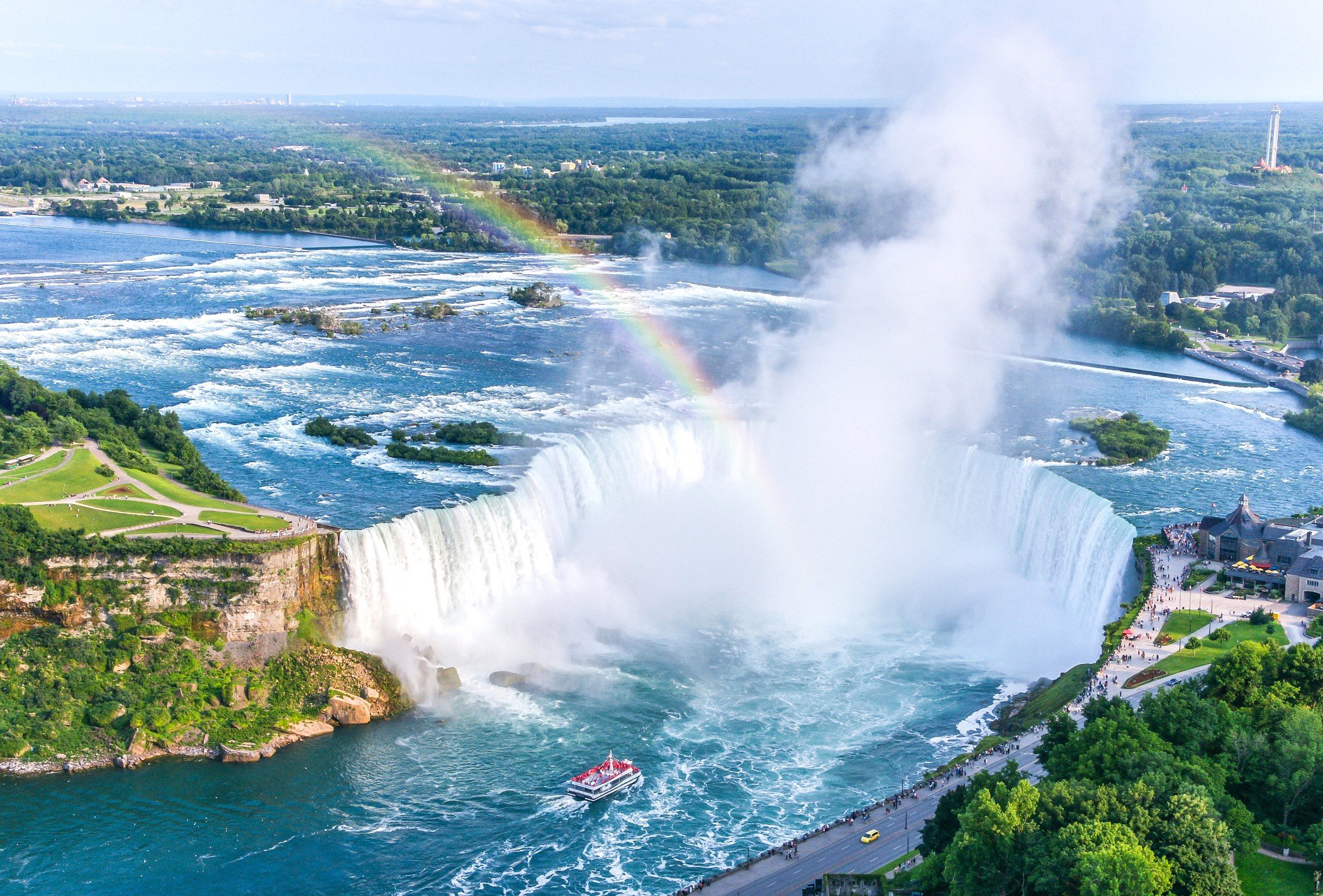
Lake Victoria
At Kenya’s Western frontier lies the great expanse of Lake Victoria. This massive lake, commonly known as Nyanza, is twice the size of Wales, and forms a natural boundary between Kenya, Tanzania and Uganda. The lake is the heart of the African continent, the source of its mightiest river, the Nile. This mighty body of water is rich in fish life, with shimmering shoals of colourful cichlids and large Nile Perch. Fishing brings many visitors to this lake, mainly in search of the Nile Perch, considered a world class game fish. Kenya, Tanzania and Uganda share Lake Victoria. It is the worlds largest tropical lake and the second largest freshwater lake. Lake Victoria touches the Equator in its northern side. It covers a total area of 68,800 sq. km [km²] and with a maximum depth of 80 m it is relatively shallow. A population of over 30 million people live in its basin.

Cliffs of Moher
You simply cannot travel to Ireland without paying a visit to Ireland’s top tourist attraction, the breathtaking Cliffs of Moher, situated in County Clare along the wild Atlantic Way. The Cliffs of Moher have majestically faced the Atlantic for over 350 million years and their beauty is incomparable. An Area of Outstanding Natural Beauty, The Cliffs rise to 702 feet (214 m) at their highest point and range for 8 kms (5 miles) over the Atlantic ocean. The sheer scale and dramatic impact of the cliffs never ceases to amaze and delight in equal measure "A Haven for Wildlife" The Cliffs are a special protected area (SPA) for seabirds with over 20 species represented. We welcome over 30,000 breeding pairs annually including guillemots, razorbills, kittiwakes, peregrine falcons and the ever popular cute puffins. These Ireland Cliffs are also home to many rare flora including Cat’s Eat and Sea Pink.

Salar de Uyuni
Bolivia’s Salar de Uyuni is considered one of the most extreme and remarkable vistas in all of South America, if not Earth. Stretching more than 4,050 square miles of the Altiplano, it is the world’s largest salt flat, left behind by prehistoric lakes evaporated long ago. Here, a thick crust of salt extends to the horizon, covered by quilted, polygonal patterns of salt rising from the ground. At certain times of the year, nearby lakes overflow and a thin layer of water transforms the flats into a stunning reflection of the sky. This beautiful and otherworldly terrain serves as a lucrative extraction site for salt and lithium—the element responsible for powering laptops, smart phones, and electric cars.

Sahara Eye
The Blue Eye of the Sahara, also known as the Richat Structure or the Guelb er Richat, is a geological formation in the Sahara Desert that resembles an enormous bullseye. The formation stretches across a 40 kilometer-wide region of the desert in the nation of Mauritania. For centuries, only a few local nomadic tribes knew about the formation. It was first photographed in the 1960s by the Gemini astronauts, who used it as a landmark to track the progress of their landing sequences. Later, the Landsat satellite took additional images and provided information about the size, height, and extent of the formation. Geologists originally believed that Eye of the Sahara was an impact crater, created when an object from space slammed into the surface. However, lengthy studies of the rocks inside the structure show that its origins are entirely Earth-based.

Sahara Desert
The Sahara is the largest hot desert in the world, and the third largest desert behind Antarctica and the Arctic, which are both cold deserts. The Sahara is one of the harshest environments on Earth, covering 3.6 million square miles (9.4 million square kilometers), nearly a third of the African continent, about the size of the United States (including Alaska and Hawaii). The name of the desert comes from the Arabic word ṣaḥrāʾ, which means "desert." The Sahara is bordered by the Atlantic Ocean on the west, the Red Sea on the east, the Mediterranean Sea on the north and the Sahel Savannah on the south. The enormous desert spans 11 countries: Algeria, Chad, Egypt, Libya, Mali, Mauritania, Morocco, Niger, Western Sahara, Sudan and Tunisia. The Sahara desert has a variety of land features, but is most famous for the sand dune fields that are often depicted in movies. The dunes can reach almost 600 feet (183 meters) high but they cover only about 15 percent of the entire desert. Other topographical features include mountains, plateaus, sand- and gravel-covered plains, salt flats, basins and depressions. Mount Koussi, an extinct volcano in Chad, is the highest point in the Sahara at 11,204 feet (3,415 m), and the Qattara Depression in Egypt is the Saraha's deepest point, at 436 feet (133 m) below sea level. Although water is scarce across the entire region, the Sahara contains two permanent rivers (the Nile and the Niger), at least 20 seasonal lakes and huge aquifers, which are the primary sources of water in the more than 90 major desert oases.

Mountain Everest
Mount Everest is a peak in the Himalaya mountain range. It is located between Nepal and Tibet, an autonomous region of China. At 8,850 meters (29,035 feet), it is considered the tallest point on Earth. In the nineteenth century, the mountain was named after George Everest, a former Surveyor General of India. The Tibetan name is Chomolungma, which means “Mother Goddess of the World.” The Nepali name is Sagarmatha, which has various meanings. The first ever recorded people to climb Everest were Edmund Hillary (a mountaineer from New Zealand) and his Tibetan guide Tenzing Norgay. They climbed the mountain in 1953 and hold the record together. The first records of Everest’s height came much earlier, in 1856. British surveyors recorded that Everest was the tallest peak in the world in their Great Trigonometrical Survey of the Indian subcontinent.

Grand Canyon
The Grand Canyon in Arizona is a natural formation distinguished by layered bands of red rock, revealing millions of years of geological history in cross-section. Vast in scale, the canyon averages 10 miles across and a mile deep along its 277-mile length. Much of the area is a national park, with Colorado River white-water rapids and sweeping vistas. it stretches through a river valley in the Colorado Plateau that exposes uplifted Proterozoic and Paleozoic strata, and is also one of the six distinct physiographic sections of the Colorado Plateau province. Even though It is not the deepest canyon in the world (Kali Gandaki Gorge in Nepal is much deeper), the Grand Canyon is known for its visually overwhelming size and its intricate and colorful landscape. Geologically, it is significant because of the thick sequence of ancient rocks that are well preserved and exposed in the walls of the canyon. These rock layers record much of the early geologic history of the North American continent.

The Great Wall of China
The Great Wall of China, the largest man-made project in the world, is a series of ancient fortifications built in northern China. Although named the 'wall', it is an integrated defense system including not only lofty and solid walls, but also massive signal towers, barriers, barracks, garrison stations, and fortresses along the walls, together forming an insurmountable line, for thousands of years, to protect the territories of ancient Chinese states against the nomadic tribes from the northern steppe. This long wall, just like a gigantic dragon, winds up and down across deserts, grasslands, mountains and plateaus, stretching approximately 21,196 kilometers from west to east of China.The height of the Great Wall is 5–8 meters (16–26 feet), where intact/restored. It was designed to be at least three times the height of a man. Some of the Wall was built along ridges, which make it look taller. The Great Wall was not just a wall. It was an integrated military defensive system with watchtowers for surveillance, fortresses for command posts and logistics, beacon towers for communications, etc. In the Ming Dynasty (1368–1644), the Great Wall was reconstructed to be stronger and more sophisticated, due to better construction techniques being developed.

Ha long Bay
Ha long Bay is a beautiful wonder of the world, in northeast Vietnam, is known for its emerald waters and thousands of towering limestone islands topped by rainforests. Junk boat tours and sea kayak expeditions take visitors past islands named for their shapes, including Stone Dog and Teapot islets. The region is popular for scuba diving, rock climbing and hiking, particularly in mountainous Cát Bà National Park. There are more than 1,600 islets in the bay, their limestone worn down by 500 million years of tropical downpours, and topped by thick jungle growth. Some of the islands are hollow, and visitors can take guided tours inside to explore majestic caves. Some of the larger islands even have their own lakes. At the center of the bay there are 775 formations in an area of just 127mi² (330km²) – and this is where travelers onboard a traditional Vietnamese junk boat can explore the bay's islands, caves, and floating villages.

Dead sea
The Dead Sea is probably one of the best known water bodies on Earth. This hyper saline lake is located in a depression, which is part of the Jordan Rift Valley. With its lake shoreline lying about 426m below mean sea level (as of June 2012), it is the lowest place on Earth. The Dead Sea borders Israel, Jordan as well as the West Bank areas, which are under Palestinian control.Since there is no outlet, the water of the Dead Sea evaporates (approx. 8 Million m³ of water per annum) leaving salt behind. The average salt content of the Dead Sea is approximately 28 %. In around 1976, the sea level fell below the elevation of an east west ridge, leading to the division of the Dead Sea into two parts, a deep northern basin and a much shallower southern basin. The sea level of the northern basin has continuously been decreasing since then and the southern basin would have been dried out by now if it wasn’t for the chemical abstraction industry pumping water into it from the northern basin. Curiously enough, the water level of the southern basin has been rising in recent years. This is due to the deposit of commercially unattractive salts at the bottom of the basin, leading to a rise in the water level.

Spencer Lake( Pink Lake )
The Lake has displayed a distinct pink hue in the past and was colloquially referred to as Pink Lake until 1966 when the Shire President, Cr W S Paterson submitted a request to the Geographic Names Committee which was successful and resulted in Lake Spencer officially becoming Pink Lake. For many years Pink Lake was a tourist attraction in the Esperance region with the surrounding area, an arterial road and local businesses adopting the name.

Peyto lake Banff National Park
This vibrant blue glacier-fed lake, located about 40 km (25 mi) north of Lake Louise in Banff National Park, is a popular stop for visitors travelling along the famed Icefields Parkway. Throughout the summer months, glacier rock flour flows into the lake, which gives the water its breathtaking colour. Named for Bill Peyto, a packer and guide of early 1900’s, the Lake is located at an elevation of ~1800 m in the Canadian Rockies. The amazing blue-green colour of this lake is due to the light reflecting properties of the glacial flour that flows into the lake from the Peyto glacier. Peyto lake is located in the Waputik valley and has a depth of ~90m. The lake is cold in summer and the lake freezes in winter as snow blankets the area.

Hanging garden of Iraq
The site of Babylon was first identified in the 1800s in what is now Iraq. Later excavations, undertaken by the German archaeologist Robert Koldewey in the late 19th and early 20th centuries, established that the city had been built and rebuilt several times, most notably on a lavish scale by its king, Nebuchadrezzar II (reigned 605-561 B.C.). Koldewey’s finds revealed an ancient locus of culture and political power. These excavations unearthed what was to become one of the most magnificent Babylonian landmarks built by Nebuchadrezzar II: the dazzling blue Ishtar Gate, now reconstructed and on display at the Pergamon Museum in Berlin. Greek and Roman texts paint vivid pictures of the luxurious Hanging Gardens of Babylon. Amid the hot, arid landscape of ancient Babylon, lush vegetation cascaded like waterfalls down the terraces of the 75-foot-high garden. Exotic plants, herbs and flowers dazzled the eyes, and fragrances wafted through the towering botanical oasis dotted with statues and tall stone columns.

The seven seas
The Greeks and Romans gave rise to the medieval definition of the Seven Seas. During this time, references to the Seven Seas meant the Adriatic Sea; the Mediterranean Sea (including the Aegean Sea); the Black Sea; the Caspian Sea; the Persian Gulf; the Arabian Sea (which is part of the Indian Ocean); and the Red Sea, including the Dead Sea and the Sea of Galilee. During the Age of Discovery (1450-1650), after Europeans began exploring North America, the definition of the Seven Seas changed again. Mariners then referred to the Seven Seas as the Arctic Ocean, the Atlantic Ocean, the Indian Ocean, the Pacific Ocean, the Mediterranean Sea, the Caribbean Sea, and the Gulf of Mexico.Other geographers identify the Seven Seas at that time as the Mediterranean and Red seas, Indian Ocean, Persian Gulf, China Sea, and the West and East African seas.

Amazon River
The Amazon River is a massive, intricate water system weaving through one of the most vital and complex ecosystems in the world — the Amazon rainforest in South America. It is by far the mightiest river on Earth in terms of volume and width — reaching a span of nearly 30 miles (48 kilometers) in some parts during the rainy season. The river and its basin are home to many unique species of animals, trees and plants. The Amazon River's 4,000-mile (6,437 km) journey begins high in the Andes. These mountains act as a wall blocking the warm, moist air moving in from the east, resulting in heavy persistent rainfall that consistently feeds the Amazon's headwaters. The river then makes its way east through thousands of miles of rainforests and lowlands until it empties into the Atlantic Ocean on the northeastern coast of Brazil. The Amazon River is the second longest river in the world, slightly shorter than the Nile River (4,258 miles or 6,853 km), although some experts contend that the two rivers are so close in length (since measuring methods vary and there is still some dispute over their true sources) that it is difficult to say which river is actually longer. With more than 1,100 tributaries — 17 of which are over 930 miles (1,497 km) long — the Amazon River has the largest drainage system in the world. It is estimated that approximately one-fifth of all the water that runs on the Earth's surface is carried by the Amazon River, according to the Encyclopedia Britannica. In fact, it has greater volume and total discharge than the next six largest rivers combined.
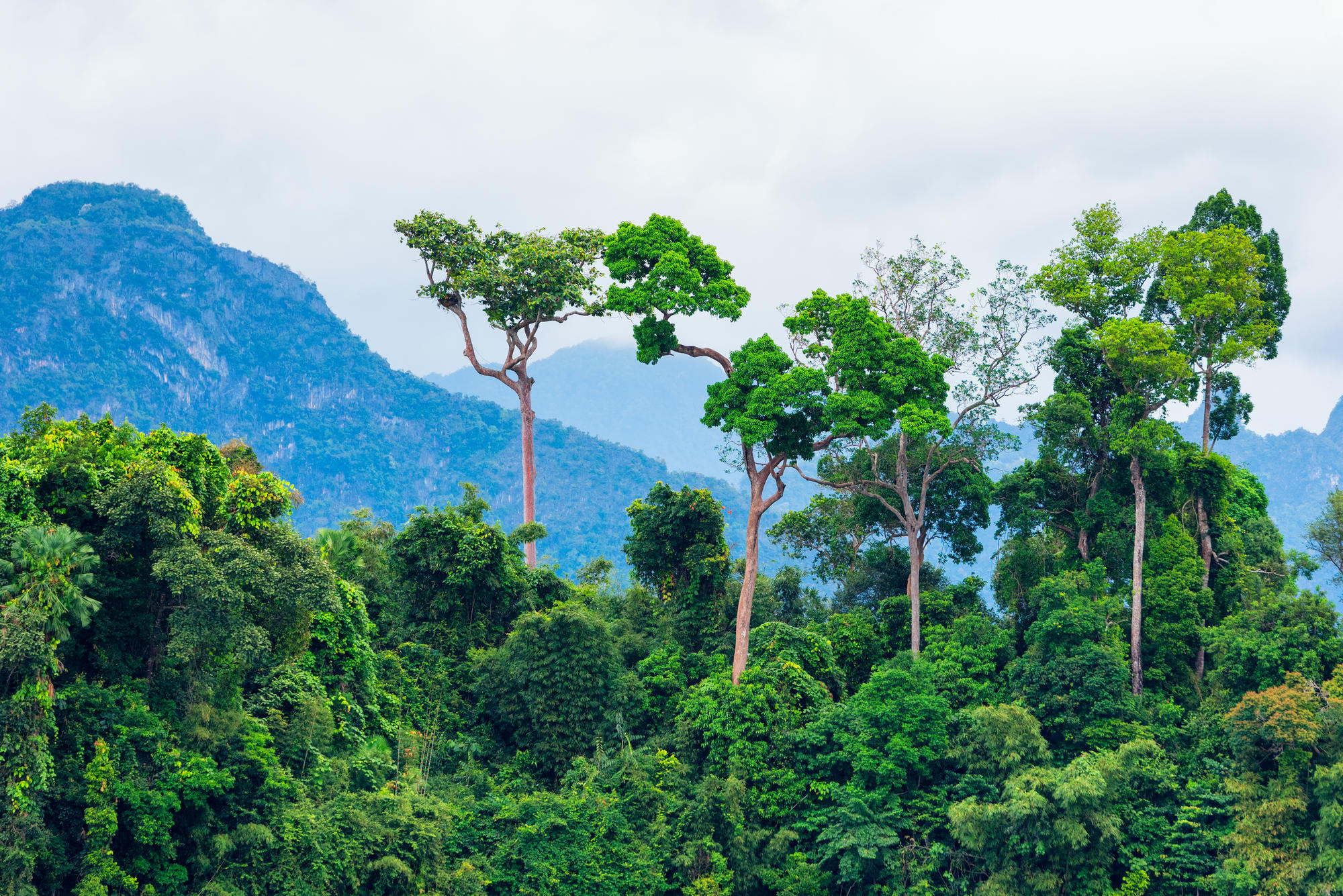
Amazon Rainforest
Amazon Rainforest, large tropical rainforest occupying the drainage basin of the Amazon River and its tributaries in northern South America and covering an area of 2,300,000 square miles (6,000,000 square km). Comprising about 40 percent of Brazil’s total area, it is bounded by the Guiana Highlands to the north, the Andes Mountains to the west, the Brazilian central plateau to the south, and the Atlantic Ocean to the east. The Amazon Rainforest is the world’s richest and most-varied biological reservoir, containing several million species of insects, plants, birds, and other forms of life, many still unrecorded by science. The luxuriant vegetation encompasses a wide variety of trees, including many species of myrtle, laurel, palm, and acacia, as well as rosewood, Brazil nut, and rubber tree. Excellent timber is furnished by the mahogany and the Amazonian cedar. Major wildlife includes jaguar, manatee, tapir, red deer, capybara and many other types of rodents, and several types of monkeys.

Niagara Falls
Niagara Falls, waterfall on the Niagara River in northeastern North America, one of the continent’s most famous spectacles. The falls lie on the border between Ontario, Canada, and New York state, U.S. For many decades the falls were an attraction for honeymooners and for such stunts as walking over the falls on a tightrope or going over them in a barrel. Increasingly, however, the appeal of the site has become its beauty and uniqueness as a physical phenomenon. The falls are in two principal parts, separated by Goat Island. The larger division, adjoining the left, or Canadian, bank, is Horseshoe Falls; its height is 188 feet (57 metres), and the length of its curving crest line is about 2,200 feet (670 metres). The American Falls, adjoining the right bank, are 190 feet (58 metres) high and 1,060 feet (320 metres) across. The water flowing over the falls is free of sediment, and its clearness contributes to the beauty of the cataract. In recognition of the importance of the waterfall as a great natural spectacle, the province of Ontario and the state of New York retained or acquired title to the adjacent lands and converted them into public parks.

Mountain Kilimanjaro
Located in Tanzania, Mount Kilimanjaro is Africa’s tallest mountain at about 5,895 meters (19,340 feet). It is the largest free-standing mountain rise in the world, meaning it is not part of a mountain range. Also called a stratovolcano (a term for a very large volcano made of ash, lava, and rock), Kilimanjaro is made up of three cones: Kibo, Mawenzi, and Shira. Kibo is the summit of the mountain and the tallest of the three volcanic formations. While Mawenzi and Shira are extinct, Kibo is dormant and could possibly erupt again. Scientists estimate that the last time it erupted was 360,000 years ago. The highest point on Kibo’s crater rim is called Uhuru, the Swahili word for “freedom.” The mountain is also known for its snow-capped peak.

Mount Rushmore
Mount Rushmore National Memorial is a large-scale mountain sculpture by artist Gutzon Borglum. The figures of America's most prominent U.S. presidents--George Washington, Thomas Jefferson, Abraham Lincoln, and Theodore Roosevelt—represent 150 years of American history. The Memorial is located near Keystone in the Black Hills of South Dakota, roughly 30 miles from Rapid City. Each year, approximately three million tourists from all over the world visit Mount Rushmore to experience this patriotic site. Today, the wonder of the mountain reverberates through every visitor. The four "great faces" of the presidents tower 5,725 feet above sea level and are scaled to men who would stand 465 feet tall.
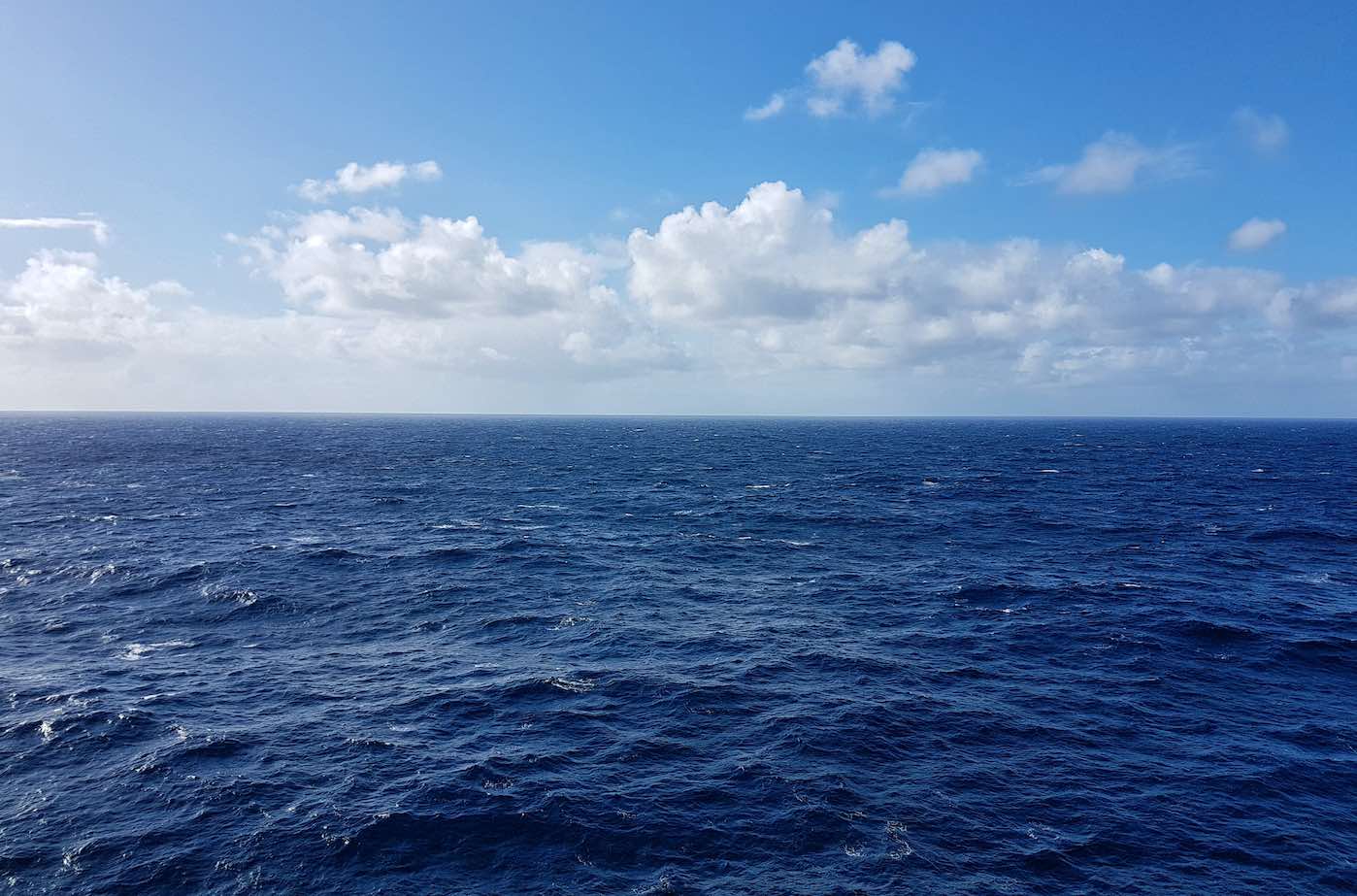
Atlantic Ocean
The Atlantic Ocean is the second-largest of the world's oceans, with an area of about 106,460,000 km2 (41,100,000 sq mi). It covers approximately 20 percent of Earth's surface and about 29 percent of its water surface area. It separates the "Old World" from the "New World". The Atlantic Ocean occupies an elongated, S-shaped basin extending longitudinally between Europe and Africa to the east, and the Americas to the west. As one component of the interconnected World Ocean, it is connected in the north to the Arctic Ocean, to the Pacific Ocean in the southwest, the Indian Ocean in the southeast, and the Southern Ocean in the south (other definitions describe the Atlantic as extending southward to Antarctica). The Equatorial Counter Current subdivides it into the North(ern) Atlantic Ocean and the South(ern) Atlantic Ocean at about 8°N.
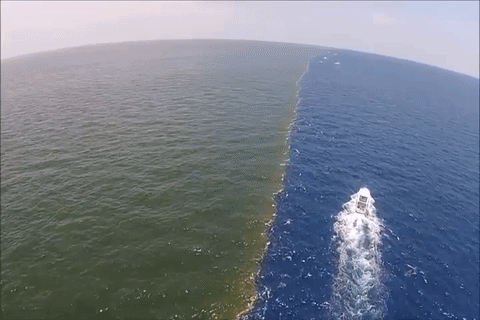
Cape Horn: THE EDGE OF THE WORLD
At this spot the Atlantic and Pacific oceans meet, often in a confrontation. No land to the east, none to the west—winds sweep all the way around the world from the west. The closest arm of Antarctica, Graham Land of the Antarctic Peninsula, lies six hundred miles to the south across the roughest stretch of water known on the planet, Drake Passage. Since its discovery by the Dutch mariners Jacques Le Maire and Willem Corneliszoon Schouten in 1616, Cape Horn has become known as the graveyard of ships. Its precise geographical location is the southern headland of Horn Island, Chile, in the Tierra del Fuego archipelago at the bottom of South America. As ships got larger, they could not navigate the Magellan Strait and had to risk “rounding the Horn,” a phrase that has acquired almost mythical status. For most mariners, it means sailing windward, from the Atlantic to the Pacific, fighting winds, waves, and currents, for sailing with the wind is strategically simpler and carries no bragging rights. Cape Horn lore is extensive, full of fear and fascination—summed up in the sailor’s motto “below 40 South there is no law, below 50 South there is no God.” Over the past four hundred years, the Horn’s cold, tempestuous waters have claimed more than one thousand ships and fifteen thousand lives. Even successful passage has often exacted a toll. For example, British Admiral George Anson’s 1741 mission to attack Spanish possessions on the west coast of South America took three months to pass Cape Horn; of his six warships, two failed to round the Horn and went home, and one was wrecked on the coast of Chile. Captain William Bligh on the HMS Bounty tried for a month in 1788 to round the Horn on his way to Tahiti, but adverse weather forced him to turn around and take the longer route east past Africa and India instead. Since the opening of the Panama Canal in 1914, there has been no need for most commercial ships to run the risk anymore, though adventuring sailors and yacht racing enthusiasts continue to test their luck.

Pacific Ocean
The Pacific Ocean is the largest and deepest ocean on Earth. It spans 60 million square miles from California to China, and in certain regions extends tens of thousands of feet below the surface of the water. To get a sense of just how immense the Pacific Ocean is, you could put all of Earth's landmasses together, and the Pacific would still be larger. The name Pacific is a version of pacify or peaceful. It was named by the explorer Ferdinand Magellan in 1520 as he sailed through a calm patch of water on the ocean. Despite its name, the Pacific is a vast body of water teeming with activity. Much of the ocean is still waiting to be explored, but human activities like industrial fishing, deep-sea mining, and fossil-fuel burning are already changing it in significant ways. The vast body of water is home to some of the most unique life forms on Earth and contains the deepest reaches known to humankind.

Indian Ocean
Indian Ocean, body of salt water covering approximately one-fifth of the total ocean area of the world. It is the smallest, geologically youngest, and physically most complex of the world’s three major oceans. It stretches for more than 6,200 miles (10,000 km) between the southern tips of Africa and Australia and, without its marginal seas, has an area of about 28,360,000 square miles (73,440,000 square km). The Indian Ocean’s average depth is 12,990 feet (3,960 metres), and its deepest point, in the Sunda Deep of the Java Trench off the southern coast of the island of Java (Indonesia), is 24,442 feet (7,450 metres).The Indian Ocean is bounded by Iran, Pakistan, India, and Bangladesh to the north; the Malay Peninsula, the Sunda Islands of Indonesia, and Australia to the east; Antarctica to the south; and Africa and the Arabian Peninsula to the west. In the southwest it joins the Atlantic Ocean south of the southern tip of Africa, and to the east and southeast its waters mingle with those of the Pacific Ocean. .
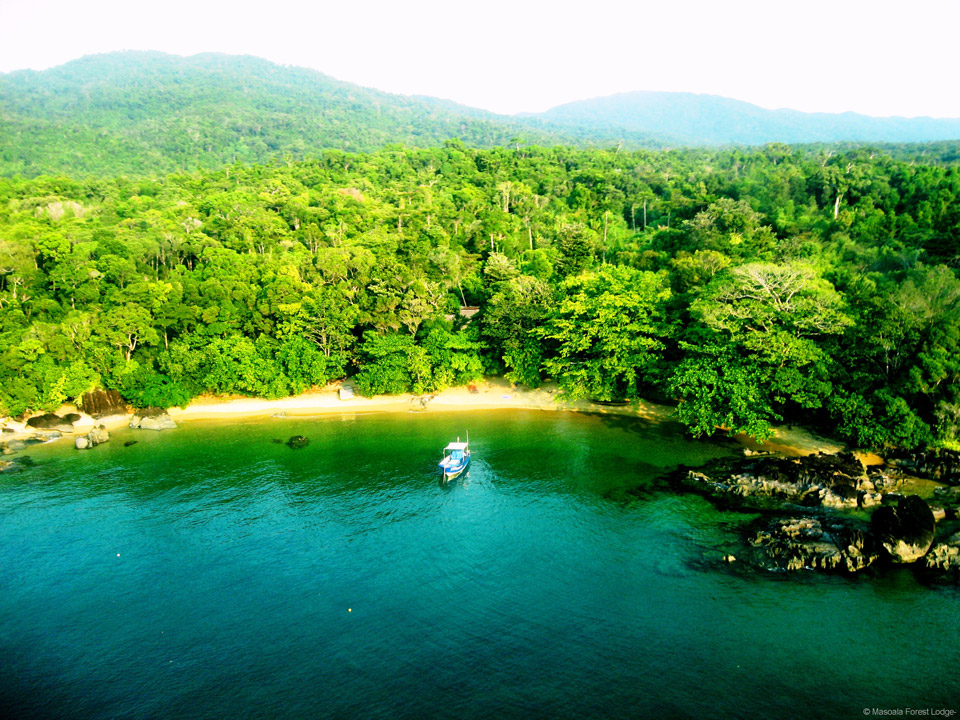
Madagascar Rainforest Tribute
The “Lost Forest” has been isolated from the eastern rainforests and western dry forests of Madagascar for hundreds of years. This secluded rainforest sits atop an extraordinary mega quartz massif unlike any other geological feature for hundreds of miles, which may contribute to its unique flora and fauna.

Madagascar Rainforest
The Madagascar lowland forests or Madagascar humid forests are a tropical moist broadleaf forest ecoregion found on the eastern coast of the island of Madagascar, home to a plant and animal mix that is 80 to 90% endemic, with the forests of the eastern plain being a particularly important location of this endemism.The ecoregion constitutes a narrow strip of lowland forests between Madagascar's east coast and the mountainous central highlands, from sea level to 800 metres (2,600 ft) elevation. It covers an area of approximately 112,600 square kilometres (43,500 sq mi). The ecoregion is under the direct influence of the oceanic trade winds, which maintain a warm, humid climate; rainfall is above 2,000 mm per year and can reach up to 6,000 mm on the Masoala peninsula. The lowland forests extend from Marojejy in the north to the southeast corner of the island.
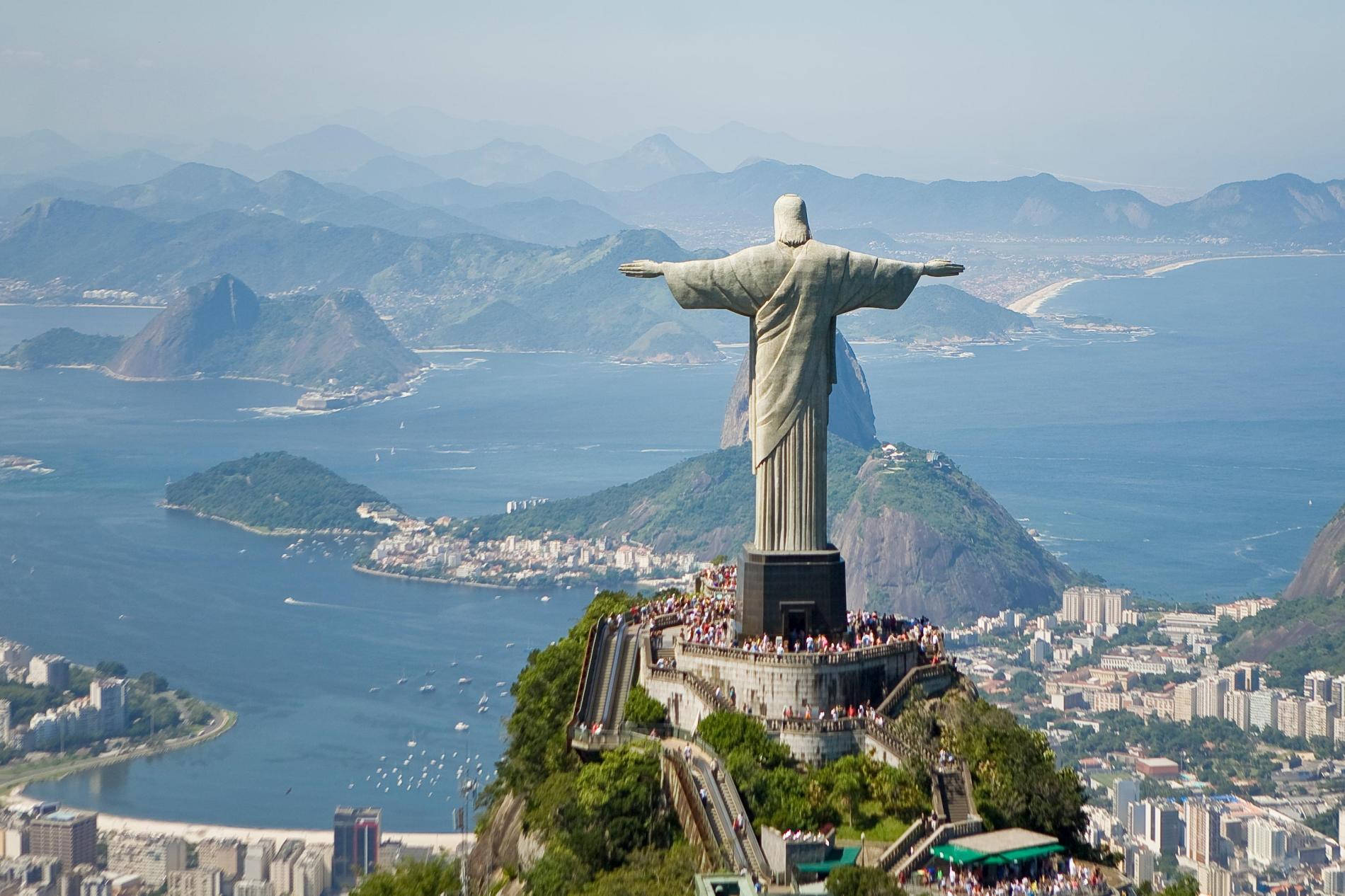
Rio de Janeiro : Christ the Redeemer statue atop Mount Corcovado
Christ the Redeemer, Portuguese Cristo Redentor, colossal statue of Jesus Christ at the summit of Mount Corcovado, Rio de Janeiro, southeastern Brazil. Celebrated in traditional and popular songs, Corcovado towers over Rio de Janeiro, Brazil’s principal port city. The statue of Christ the Redeemer was completed in 1931 and stands 98 feet (30 metres) tall, its horizontally outstretched arms spanning 92 feet (28 metres). The statue has become emblematic of both the city of Rio de Janeiro and the whole nation of Brazil. The statue, made of reinforced concrete clad in a mosaic of thousands of triangular soapstone tiles, sits on a square stone pedestal base about 26 feet (8 metres) high, which itself is situated on a deck atop the mountain’s summit. The statue is the largest Art Deco-style sculpture in the world. In the 1850s the Vincentian priest Pedro Maria Boss suggested placing a Christian monument on Mount Corcovado to honour Isabel, princess regent of Brazil and the daughter of Emperor Pedro II, although the project was never approved. In 1921 the Roman Catholic archdiocese of Rio de Janeiro proposed that a statue of Christ be built on the 2,310-foot (704-metre) summit, which, because of its commanding height, would make it visible from anywhere in Rio.

Antarctica Iceberg : The Amery Ice Shelf
The calved block covers 1,636 sq km in area - a little smaller than Scotland's Isle of Skye - and is called D28. The scale of the berg means it will have to be monitored and tracked because it could in future pose a hazard to shipping. Not since the early 1960s has Amery calved a bigger iceberg. That was a whopping 9,000 sq km in area. Amery is the third largest ice shelf in Antarctica, and is a key drainage channel for the east of the continent. The shelf is essentially the floating extension of a number of glaciers that flow off the land into the sea. Losing bergs to the ocean is how these ice streams maintain equilibrium, balancing the input of snow upstream. So, scientists knew this calving event was coming. What's interesting is that much attention in the area had actually been focussed just to the east of the section that's now broken away. This is a segment of Amery that has affectionately become known as "Loose Tooth" because of its resemblance in satellite images to the dentition of a small child. Both ice areas had shared the same rift system.
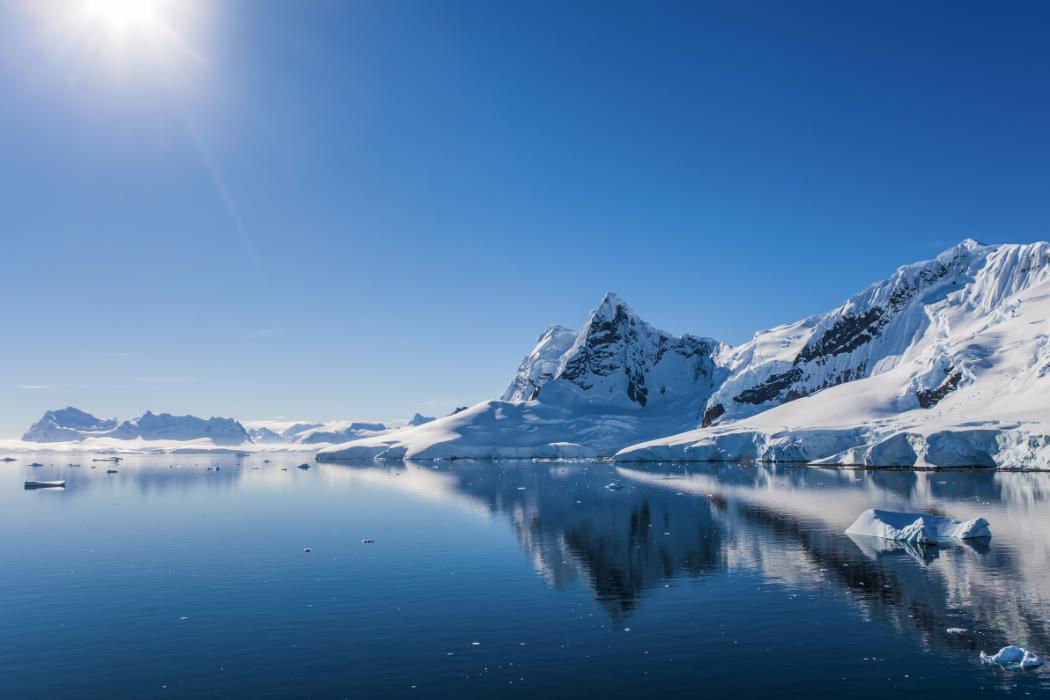
Antarctica Ocean
The Southern Ocean encircles Antarctica, and its area is usually defined as extending from the edge of the continent (and its ice shelves) to the position of the ‘polar front’ separating it from the surrounding Pacific, Indian and South Atlantic Oceans. This Antarctic Polar Front marks the location where there is a strong contrast in the temperature of the sea water: the Southern Ocean water is significantly colder than the waters of the surrounding oceans, ranging from -1.8°C near Antarctica to about 3.5°C near the polar front. The polar front boundary is relatively stable in its position through the year, but the latitude at which it is found varies around the continent.

Eiffel Tower
When the French government was organizing the International Exposition of 1889 to celebrate the centenary of the French Revolution, a competition was held for designs for a suitable monument. More than 100 plans were submitted, and the Centennial Committee accepted that of the noted bridge engineer Gustave Eiffel. Eiffel’s concept of a 300-metre (984-foot) tower built almost entirely of open-lattice wrought iron aroused amazement, skepticism, and no little opposition on aesthetic grounds. When completed, the tower served as the entrance gateway to the exposition. The Eiffel Tower is 984 feet tall and consists of an iron framework supported on four masonry piers, from which rise four columns that unite to form a single vertical tower. Platforms, each with an observation deck, are at three levels. Elevators ascend the piers on a curve, and Eiffel contracted the Otis Elevator Company of the United States to design the tower’s famous glass-cage elevators.

Tower Bridge
Tower Bridge is a combined bascule and suspension bridge in London, built between 1886 and 1894. The bridge crosses the River Thames close to the Tower of London and has become a world-famous symbol of London. As a result, it is sometimes confused with London Bridge, about half a mile upstream. it is a bascule and suspension bridge on River Thames. It has two towers, in Victorian Gothic style, that are connected with two walkways that are constructed so they can resist horizontal forces from suspended parts of the bridge. Base of each tower holds machines that lift two parts of the bridge so bridge can allow passing of river traffic beneath it. Tower Bridge is located close to the Tower of London from which it got its name.
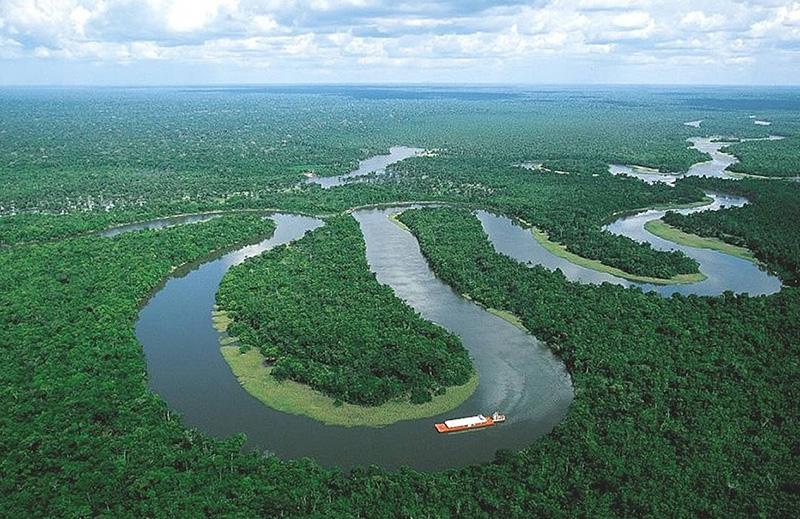
River Nile
The Nile is a major north-flowing river in northeastern Africa, and is the longest river in Africa and the disputed longest river in the world,The Nile River flows from south to north through eastern Africa. It begins in the rivers that flow into Lake Victoria (located in modern-day Uganda, Tanzania, and Kenya), and empties into the Mediterranean Sea more than 6,600 kilometers (4,100 miles) to the north, making it one of the longest river in the world. The Nile River was critical to the development of ancient Egypt. In addition to Egypt, the Nile runs through or along the border of 10 other African countries, namely, Burundi, Tanzania, Rwanda, the Democratic Republic of the Congo, Kenya, Uganda, Sudan, Ethiopia, and South Sudan. Its three main tributaries are the White Nile, the Blue Nile, and the Atbara. The soil of the Nile River delta between El Qâhira (Cairo) and the Mediterranean Sea is rich in nutrients, due to the large silt deposits the Nile leaves behind as it flows into the sea. The banks of the Nile all along its vast length contain rich soil as well, thanks to annual flooding that deposits silt. From space, the contrast between the Nile's lush green river banks and the barren desert through which it flows is obvious.

Arkansas Hot Spring
Hot Springs is a city in the Ouachita Mountains of Arkansas. It’s known for naturally heated springs, many of them in Hot Springs National Park to the north. Bathhouse Row has 8 bathhouses from the 19th and 20th centuries. These include Buckstaff Baths, with thermal baths. The elaborate, stained-glass-and-marble Fordyce Bathhouse has a lobby fountain and houses the park’s visitors center and museum.

Union Station, Washington, D.C.
Washington Union Station is a major train station, transportation hub, and leisure destination in Washington, D.C. Opened in 1907, it is Amtrak's headquarters and the railroad's second-busiest station with annual ridership of just under 5 million and the ninth-busiest in overall passengers served in the United States.
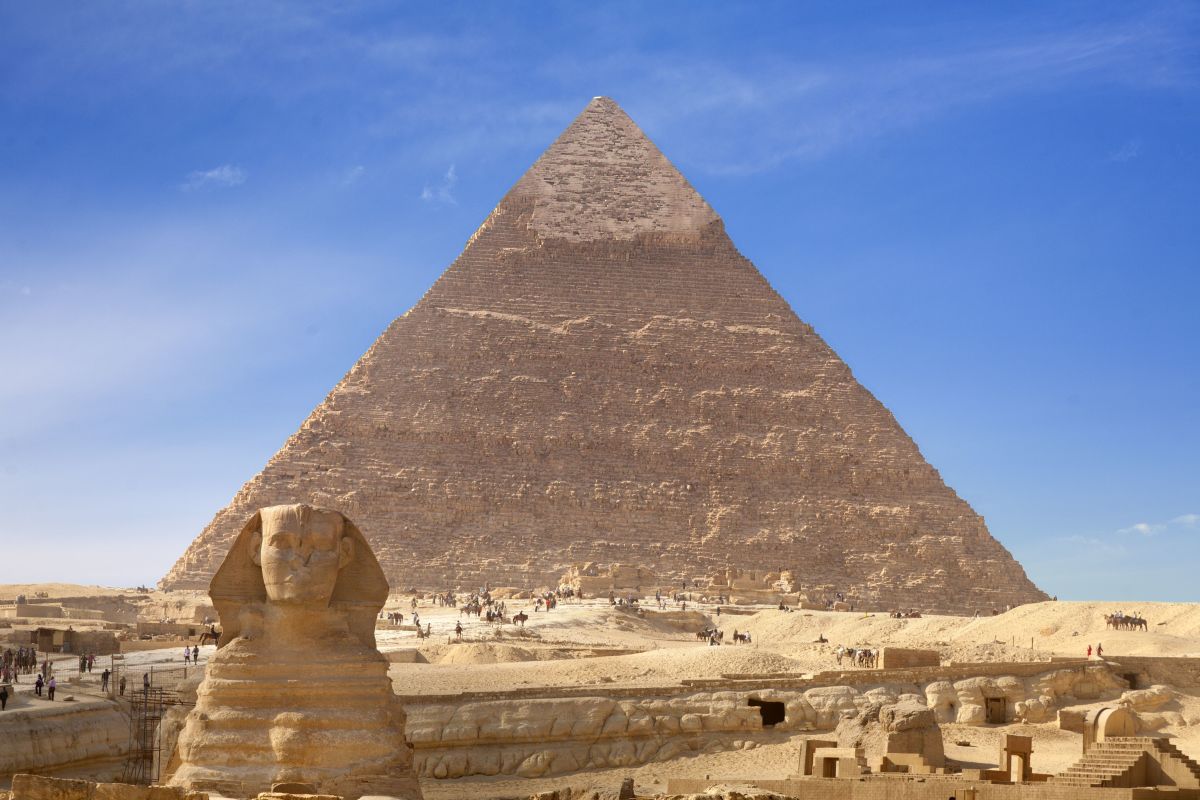
Great Pyramid of Giza, Egypt
Pyramids of Giza, Arabic Ahrāmāt Al-Jīzah, Giza also spelled Gizeh, three 4th-dynasty (c. 2575–c. 2465 BCE) pyramids erected on a rocky plateau on the west bank of the Nile River near Al-Jīzah (Giza) in northern Egypt. In ancient times they were included among the Seven Wonders of the World. The ancient ruins of the Memphis area, including the Pyramids of Giza,Khufu’s pyramid is perhaps the most colossal single building ever erected on the planet. Its sides rise at an angle of 51°52′ and are accurately oriented to the four cardinal points of the compass. The Great Pyramid’s core is made of yellowish limestone blocks, the outer casing (now almost completely gone) and the inner passages are of finer light-coloured limestone, and the interior burial chamber is built of huge blocks of granite. Approximately 2.3 million blocks of stone were cut, transported, and assembled to create the 5.75-million-ton structure, which is a masterpiece of technical skill and engineering ability. The internal walls as well as those few outer-casing stones that still remain in place show finer joints than any other masonry constructed in ancient Egypt.
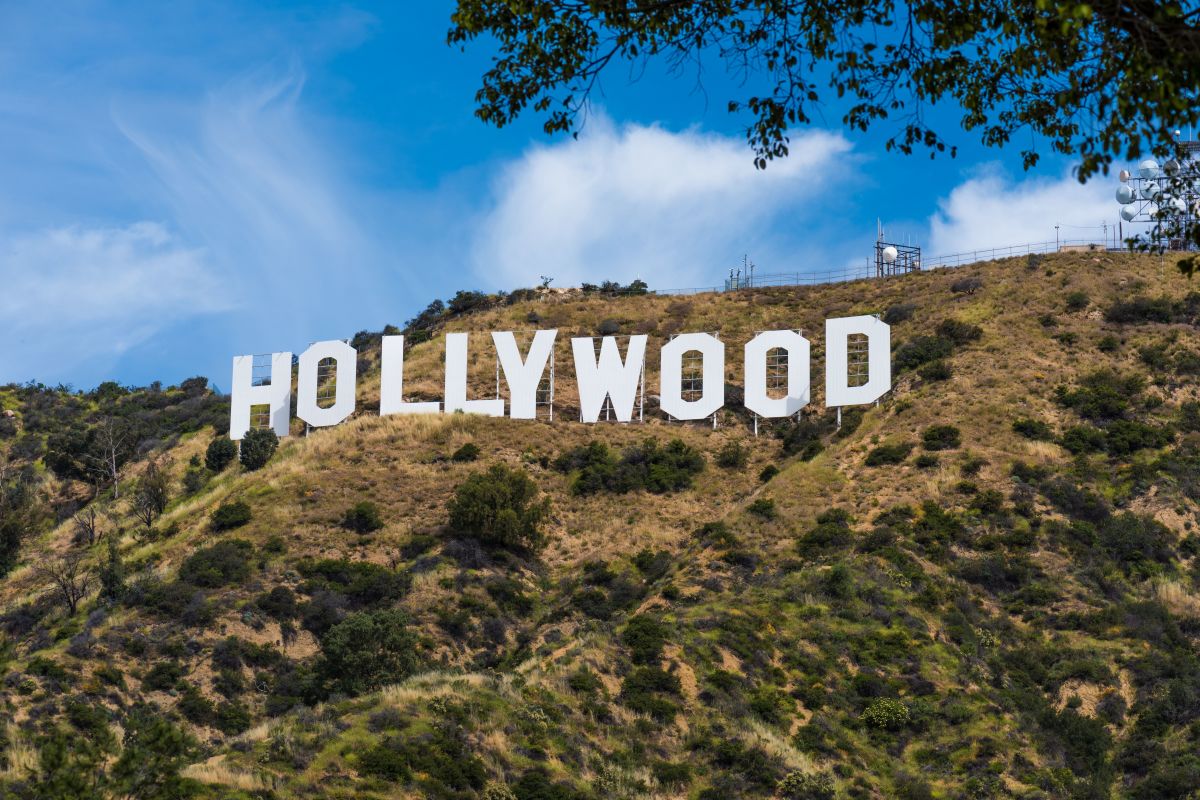
Hollywood Sign, Los Angeles
Since it was dedicated in 1923, the Hollywood Sign has become a Los Angeles icon and synonymous with the city. Originally built as "HOLLYWOODLAND" for a real estate development, the sign was rebuilt as "HOLLYWOOD" in 1949 and was nearly lost in the 70's due to vandalism and neglect. Today the 45-foot-tall, 350-foot-long sign is in its best condition ever, thanks to the ongoing preservation efforts of the non-profit Hollywood Sign Trust. From hiking trails to unique views on horseback and even in a helicopter, read on for the best ways to view the world-famous Hollywood Sign.

Berlin Wall, East Side Gallery, Berlin
At 1316 metres long, the open-air art gallery on the banks of the Spree in Friedrichshain is the longest continuous section of the Berlin Wall still in existence. Immediately after the wall came down, 118 artists from 21 countries began painting the East Side Gallery, and it officially opened as an open air gallery on 28 September 1990. Just over a year later, it was given protected memorial status.In more than a hundred paintings on what was the east side of the wall, the artists commented on the political changes in 1989/90. Out in the open air, the East Side Gallery is completely exposed to the weather, which means that there are regular efforts to restore it. In 1996, Kani Alavi founded East Side Gallery e. V., an artists’ initiative to preserve and restore the works. By 2000, a 300-metre stretch of the wall had already been restored and 33 pictures repainted, and in 2009 the whole East Side Gallery was restored. 87 artists took part and 100 paintings were restored.In November 2018, the State of Berlin transferred the East Side Gallery to the property of the Stiftung Berliner Mauer (SBM), which is thus responsible for the preservation of the monument.

La Sagrada Familia, Barcelona, Spain
The Sagrada Família, or its full name Temple Expiatori de la Sagrada Família in Catalan, "Expiatory Temple of the Holy Family" in English, is a basilica that is now a major symbol of the city of Barcelona throughout the world at the same time as the most famous monument by ’Antoni Gaudí. The architect consecrated sixteen years of his life to his construction, living as a recluse in the building before having an accident and dying in 1926 without his project being completed. Since then he rests in the crypt of the basilica that one can and must visit. With this project the church becomes much larger than originally planned and its symbolism is totally reimagined. Mystical religious references, the history and mysteries of the Christian faith, the stages of the life of Christ, the heavenly Jerusalem symbolizing peace ... His imagination and his solid liturgical knowledge, Gaudi defined a new religious architecture that will be called naturalist -modernist. A symbolic creativity never equaled to this day. The work realized during his lifetime, that is to say the façade of the Nativity, the tower of Saint Barnabé and part of the exterior wall of the apse, was declared a world heritage by Unesco in 2005. The basilica of the Sagrada Familia was consecrated by Pope Benedict XVI on November 7, 2010.
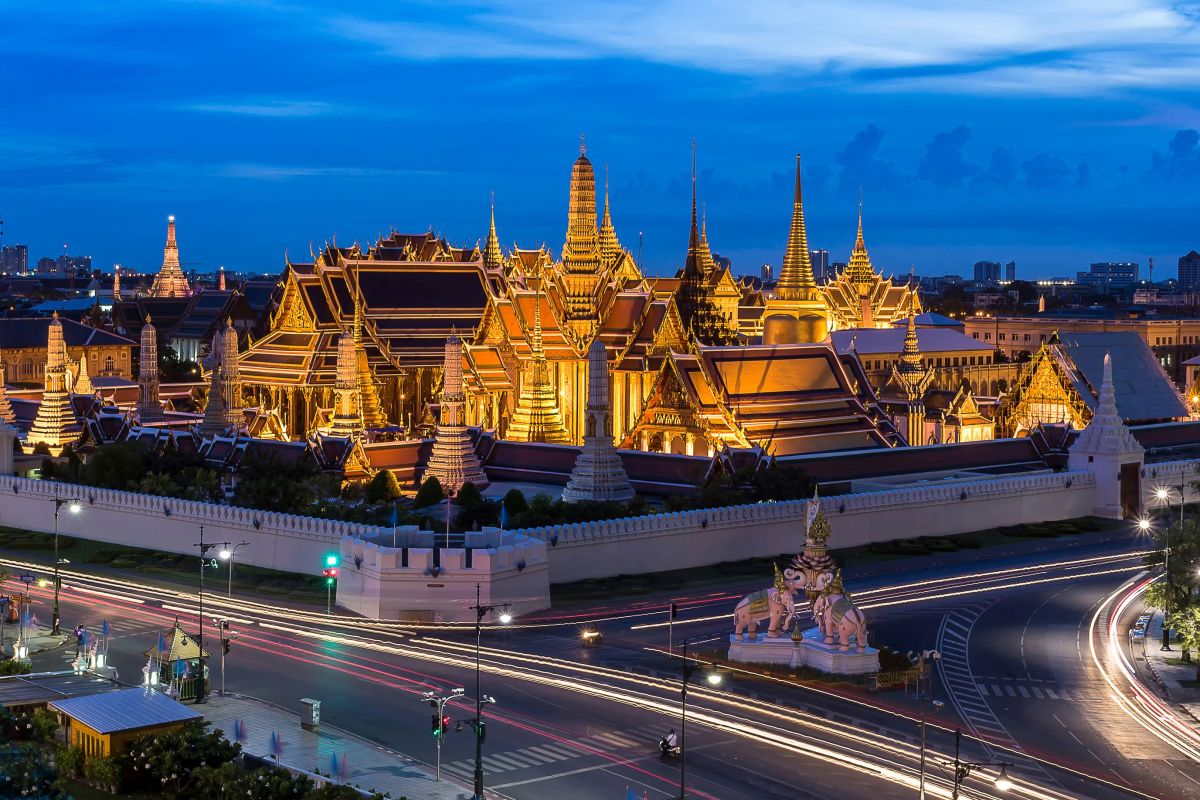
Grand Palace, Bangkok
The dazzling, spectacular Grand Palace is undoubtedly the most famous landmark in Bangkok. It’s one must-see sight that no visit to the city would be complete without. It was built in 1782 and for 150 years was the home of the Thai King, the Royal court and the administrative seat of government. The Grand Palace of Bangkok is a grand old dame indeed, that continues to have visitors in awe with its beautiful architecture and intricate detail, all of which is a proud salute to the creativity and craftsmanship of the Thai people. Within its walls were also the Thai war ministry, state departments, and even the mint. Today, the complex remains the spiritual heart of the Thai Kingdom.

Mount Fuji, Japan
Mount Fuji is a symbol of Japan. The mountain contributes to Japan's physical, cultural, and spiritual geography. Mount Fuji is the tallest mountain in Japan, standing at 3,776 meters (12,380 feet). It is an active volcano, sitting on a "triple junction" of tectonic activity: the Amurian plate (associated with the Eurasian tectonic plate), the Okhotsk plate (associated with the North American plate) and the Filipino plate all converge in the region beneath Mount Fuji. It is only 100 kilometers (62 miles) from Tokyo, Japan's capital and largest city. In fact, the last time Mount Fuji erupted, in 1707, volcanic ash fell on Tokyo. Mount Fuji is the single most popular tourist site in Japan, for both Japanese and foreign tourists. More than 200,000 people climb to the summit every year, mostly during the warmer summer months. "Huts" on the route up the mountain cater to climbers, providing refreshments, basic medical supplies, and room to rest. Many people start climbing Mount Fuji at night, as better to experience sunrise from the summit—Japan, after all, is nicknamed "the Land of the Rising Sun." The sunrise from Mount Fuji has a special name, Goraiko.
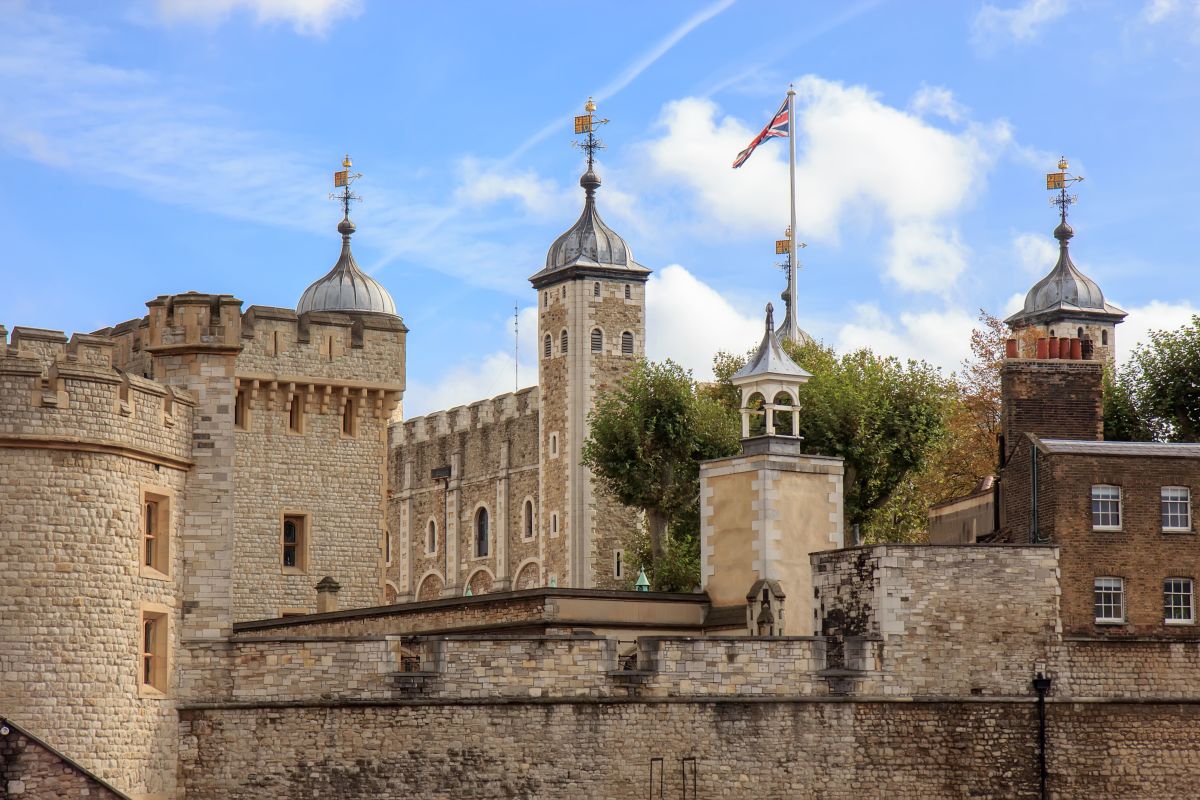
Tower of London, London
The Tower of London is a 900-year-old castle and fortress in central London that is notable for housing the crown jewels and for holding many famous and infamous prisoners. Throughout its history, the tower has served many purposes: it housed the royal mint (until the early 19th century), a menagerie (which left in 1835), a records office, an armory and barracks for troops. Until the 17th century, it was also used as a royal residence. Throughout its history the tower was used to imprison a wide range of prisoners, from deposed monarchs to more common criminals. Prisoners included Lady Jane Grey, who was queen for about a week in the 16th century before she was deposed by Mary I.

The Strip, Las Vegas
Lined with upscale casino hotels, the neon-soaked Strip is quintessential Las Vegas. As well as gambling floors, the vast hotel complexes house a variety of shops, restaurants (ranging from mainstream to high-end), and performance venues for music, comedy and circus-style acts. Attractions like the soaring, choreographed Fountains of Bellagio and the High Roller observation wheel draw crowds

Neuschwanstein Castle, Germany
Commissioned in 1868 by King Ludwig II of Bavaria as a monument to German composer Richard Wagner, as with any fairytale, the story behind this castle’s creation is full of mystery and intrigue. It’s a tragic tale of a handsome young prince with a passion for music, art and architecture, who ascended the throne as a teenager and ruled as a recluse until his untimely (and mysterious) death in 1886 at the age of 41. During his lifetime, Ludwig II was denounced as a madman obsessed with beauty. Spending money he didn’t have on eccentric and ambitious building projects, Neuschwanstein was just one of many commissions ordered to enrich the cultural landscape of the nation. His artistic, introverted nature was considered idiosyncratic for a king at that time and he was ultimately declared unfit to rule by his closest advisors. However, the plot to depose ‘The Mad King’ Ludwig led to suspicions surrounding his death and cast doubt on these assertions. Once berated as a vanity project orchestrated by a man whose kingdom was slipping away from him, the palace is now firmly considered a national treasure. Ludwig II used his personal fortune and heavily borrowed gold to build the castle, rather than take from Bavarian public funds. Having spent only 11 nights at the castle and sadly dying before its completion, Ludwig II’s creative vision lives on in thebuilding. The castle was opened to the public shortly after his death in 1886 and has since attracted more than 61 million visitors.

Ubud, Bali, Indonesia
Ubud is one of those places where a holiday of a few days can easily turn into a stay of weeks, months or even years. The size of the town's expat community attests to this, and so do the many novels and films that have been set here, creative responses to the seductive nature of this most cultured of all Balinese towns. This is a place where traditional Balinese culture imbues every waking moment, where colourful offerings adorn the streets and where the hypnotic strains of gamelan are an ever-present soundtrack to everyday life. It's also somewhere that is relentlessly on trend – a showcase of sustainable design, mindfulness, culinary inventiveness and the very best that global tourism has to offer. Come here for relaxation, for rejuvenation and to have what may well be the most magical holiday of your life.

Burj Khalifa, Dubai, United Arab Emirates
The Burj Khalifa, known as the Burj Dubai prior to its inauguration in 2010, is a skyscraper in Dubai, United Arab Emirates. With a total height of 829.8 m and a roof height of 828 m, the Burj Khalifa has been the tallest structure and building in the world since its topping out in 2009. While all United Arab Emirates countries boast architectural superlatives, the tallest of the futuristic towers – and the tallest building in the world – is the slender silver and glass Burj Khalifa. Even though you can see it from everywhere, to experience the 148th-floor Observation Deck without lines, and feel the breeze whooshing past the partial glass barriers, is a bucket-list adventure many think warrants the sky-high admission fee.

Statue of Liberty, New York Harbor
The Statue of Liberty was a joint effort between France and the United States, intended to commemorate the lasting friendship between the peoples of the two nations.On June 17, 1885, the dismantled Statue of Liberty, a gift of friendship from the people of France to the people of America, arrives in New York Harbor after being shipped across the Atlantic Ocean in 350 individual pieces packed in more than 200 cases. The copper and iron statue, which was reassembled and dedicated the following year in a ceremony presided over by U.S. President Grover Cleveland, became known around the world as an enduring symbol of freedom and democracy. Intended to commemorate the American Revolution and a century of friendship between the U.S. and France, the statue was designed by French sculptor Frederic-Auguste Bartholdi (who modeled it after his own mother), with assistance from engineer Gustave Eiffel, who later developed the iconic tower in Paris bearing his name. The statue was initially scheduled to be finished by 1876, the 100th anniversary of America’s Declaration of Independence; however, fundraising efforts, which included auctions, a lottery and boxing matches, took longer than anticipated, both in Europe and the U.S., where the statue’s pedestal was to be financed and constructed. The statue alone cost the French an estimated $250,000 (more than $5.5 million in today’s money).
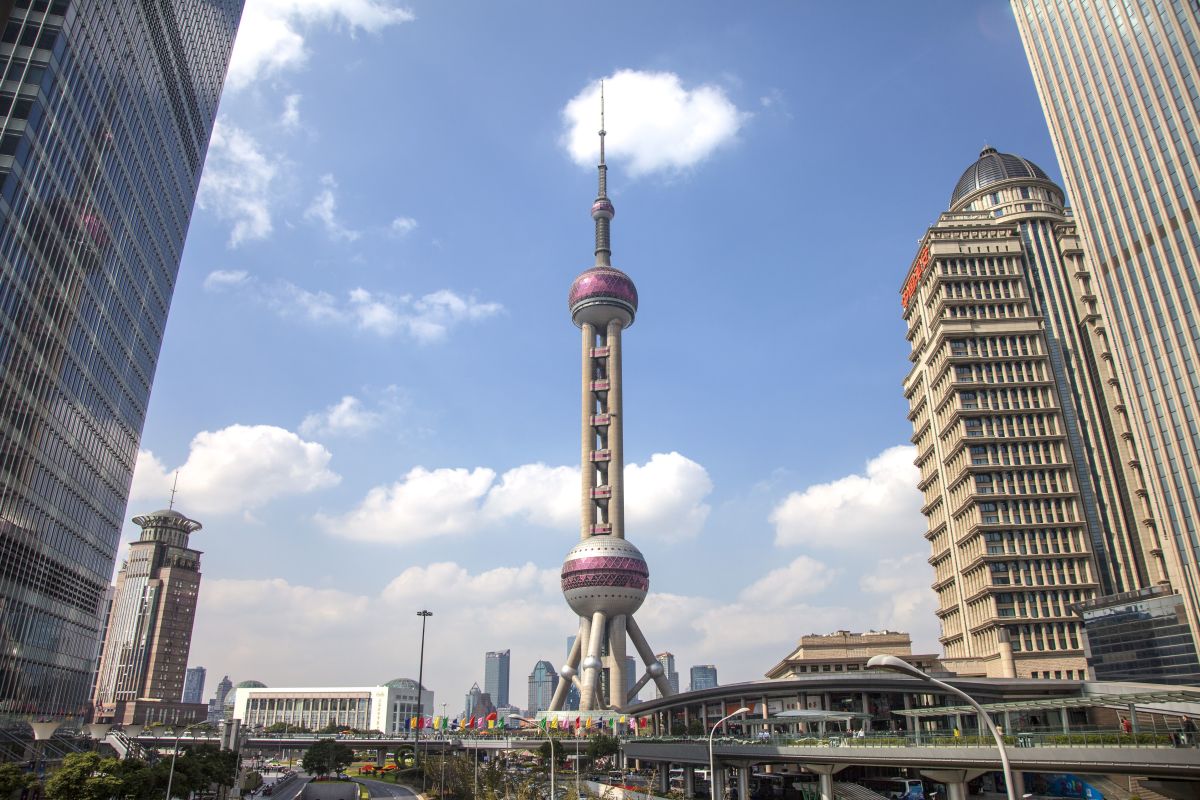
Oriental Pearl Tower, Shanghai
TShanghai Oriental Pearl Tower is located in Pudong Park in Lujiazui, Pudong New Area, Shanghai. Surrounded by the Yangpu Bridge in the northeast and the Nanpu Bridge in the southwest, it creates a picture of 'twin dragons playing with pearls'. The entire scene is a photographic jewel that excites the imagination and attracts thousands of visitors year-round. This 468 meters (1,536 feet) high tower is the world's sixth and China's second tallest TV and radio tower. However, even more alluring than its height is the unique architectural design that makes Oriental Pearl Tower one of the most attractive places anywhere. Its base is supported by three seven-meter wide slanting stanchions. Surrounding the eleven steel spheres that are 'strung' vertically through the center are three nine-meter wide columns. There are three large spheres including the top sphere, known as the space module. Then there are five smaller spheres and three decorative spheres on the base. The entire structure rests on rich green grassland and gives the appearance of pearls shining on a jade plate.
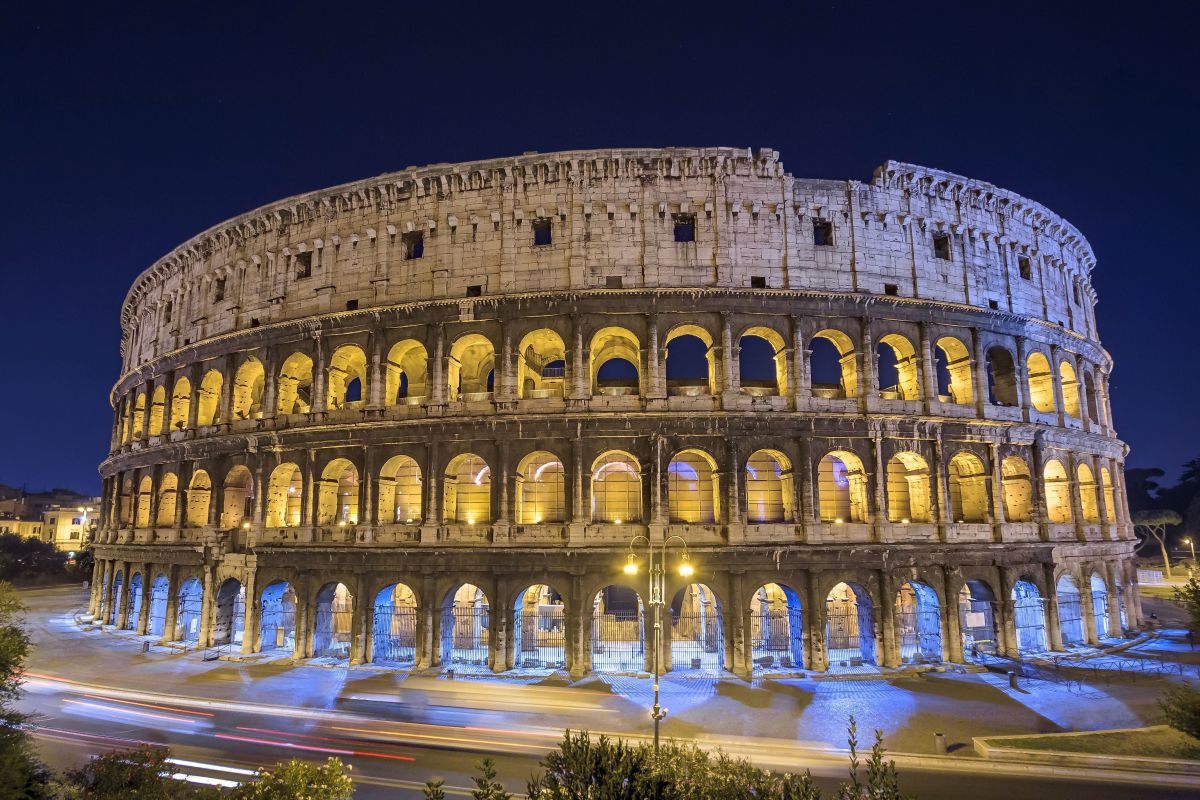
Colosseum, Rome
The Colosseum, also named the Flavian Amphitheater, is a large amphitheater in Rome. It was built during the reign of the Flavian emperors as a gift to the Roman people. Construction of the Colosseum began sometime between A.D. 70 and 72 under the emperor Vespasian. It opened nearly a decade later and was modified several times in the following years. The massive structure measured approximately 189 by 156 meters (620 by 513 feet), towered four stories high, and included eighty entrances to the amphitheater—seventy-six for the patrons, two for participants of events, and two exclusively for the emperor to use. The sheer number of entrances proved to be necessary: the Colosseum could hold more than 50,000 spectators at its maximum capacity. When the Colosseum first opened, the emperor Titus celebrated with a hundred days of gladiatorial games. Emperors traditionally attended the games. The emperor Commodus is known to have performed in the arena on hundreds of occasions. Aside from the games, the Colosseum also hosted dramas, reenactments, and even public executions. Eventually, the Romans’ interest in the games waned. After the fall of the Western Roman Empire, the Colosseum began to deteriorate.

Matterhorn, Switzerland
The Matterhorn is a mountain of the Alps, straddling the main watershed and border between Switzerland and Italy. It is a large, near-symmetric pyramidal peak in the extended Monte Rosa area of the Pennine Alps, whose summit is 4,478 metres high, making it one of the highest summits in the Alps and Europe.The Matterhorn is undoubtedly one of the most photographed mountains in the world. Symbolic of Switzerland, and situated on the border between the canton of Valais and Italy, it's a destination that attracts visitors from all over the world. Known internationally by its German name the Matterhorn, it owes its fame to its almost perfect pyramid shape. Its four-sided, ridged rocky peak towers 4,478 metres above sea level, in perfect isolation in the midst of a quite singular alpine panorama. Photographers are transfixed by the mountain from dawn till dusk, ever eager to capture the constantly changing colours.
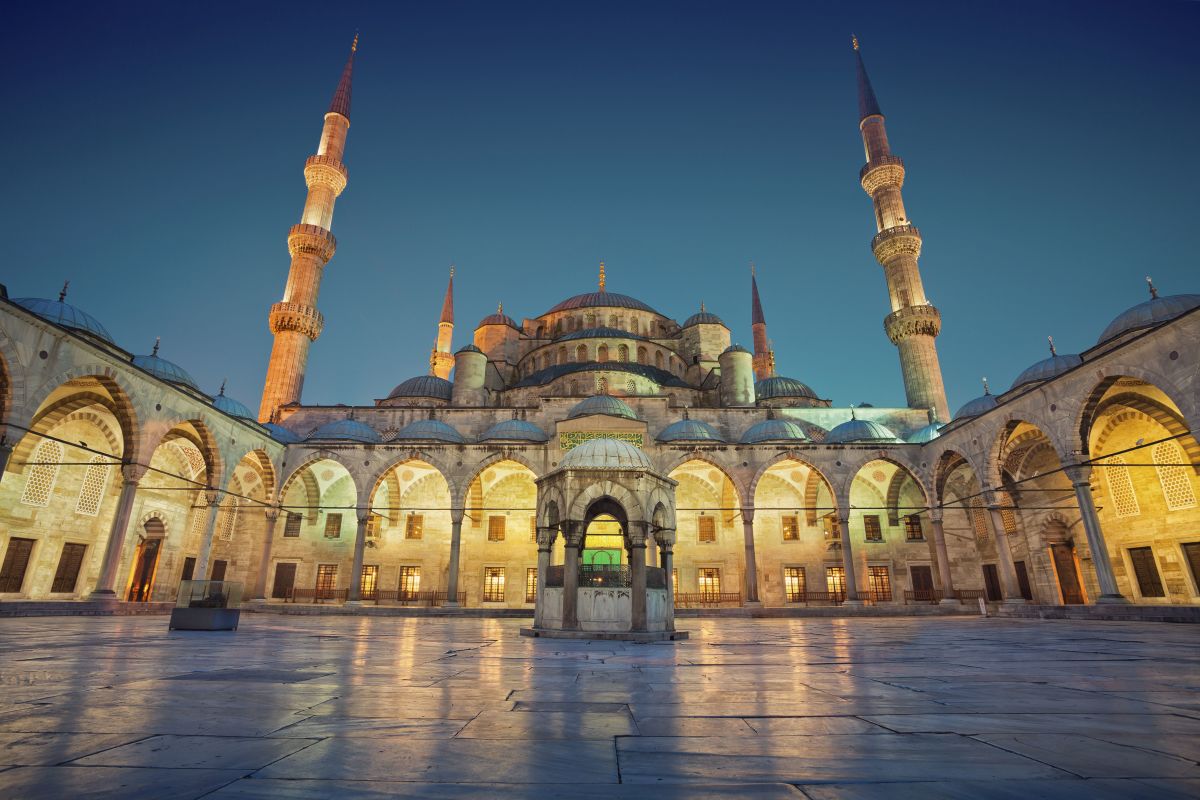
Blue Mosque, Istanbul
The Blue Mosque, one of the most important works of Ottoman history, was built by the architect, Mehmet Aga, at the request of Sultan Ahmet I. It is stated in many sources that Ahmed the First, who sat on the throne as the 14th Ottoman sultan at the age of 14 in 1603, was a highly religious person. Adorned with more than 20,000 blue handcrafted İznik tiles, stained-glass windows, and the golden brushstrokes of a 17th-century calligrapher, the Blue Mosque is the legacy of Sultan Ahmet I (1590–1617). The young sultan audaciously wished to outdo the builders of Hagia Sophia, commissioning six minarets to match the number at Mecca’s Sacred Mosque (which now has seven minarets as a result). Today, this magnificent mosque is a place of worship for thousands who visit from around the world.

Victoria Harbour, Hong Kong
Situated between Hong Kong Island and Kowloon Peninsula, Victoria Harbour, aka Victoria Bay, is the largest harbour in China and the third largest in the world, after San Francisco in the United States and Re de Janeiro in Brazil. It is home to most of the ports of Hong Kong, making the city one of the world's busiest ports. The harbour bustles day and night with all manner of watercraft – from the historic Star Ferries to cruise liners, cargo ships, and wooden fishing vessels. Victoria Harbour is an almost ideally naturally sheltered channel between Hong Kong Island and the Hong Kong mainland. The channel is deep enough for the biggest ships and sheltered by the high mountains on Hong Kong Island from storm winds. It is also naturally curved like a semicircle around the north shore of Hong Kong Island so that high waves are blocked out. Islands to the east and south and a narrow opening on the eastern inlet further shelter the harbor. This sheltered area was one of the British Empire's biggest military and trading ports, and it is now both the world's premier tourist area and one of the world's busiest commercial ports. Two big cruise ship ports bring in tens of thousands of eager shoppers and sightseers each year, and the transportation connections to the harbor area are among the world's best and quickest

Library of Celsus, Ephesus, Turkey
The Library of Celsus in ancient Ephesus, located in western Turkey, was a repository of over 12,000 scrolls and one of the most impressive buildings in the Roman Empire. Constructed in the 2nd century CE, it was named after the city’s former Roman governor. Today, only the library's impressive facade remains of this once great building and is a silent witness to the city’s stature as a great centre of learning and early Christian scholarship during the Roman period.Built at the crossroads of Greek, Roman, and Persian influences, the Ephesus Library is but one of the sights to see on a trip to this ancient land. Founded as an important port city as far back as the tenth century B.C. Ephesus became an affluent center of Roman civilization, culture, commerce, and Christianity in the first centuries A.D. The Temple of Artemis, a perfect model of the Greek temple long destroyed by earthquakes and marauders, was built in Ephesus around 600 B.C. and is one of the original Seven Wonders of the World. Hundreds of years later, Mary, the mother of Jesus, is said to have lived in Ephesus at the end of her life. The first civilizations of the Western world dwelt in areas around the Mediterranean Sea and at one time Ephesus, off the coast of the southern Aegean Sea, was a center of civilization.

Times Square, New York
With 50 million visitors annually, Manhattan’s monument to billboards, Broadway and buskers is a must. It all began at Long Acre Square when New York Times publisher Adolph S. Ochs built his paper’s office tower in an area benefitting from the recent arrival of electric lighting and the subway. Times Tower opened in 1904. Shortly after, former Mayor McClellan renamed the square after the paper, and it’s still used for the New Year’s celebration they pioneered. The Theater District is the teeming heart of Midtown West. In the pedestrian plazas of Times Square, costumed characters beckon to energetic crowds under the pulsing lights of towering digital billboards. Locals and tourists gather on the giant red staircase above the TKTS booth, which sells tickets to Broadway shows running at the area’s historic theaters. On busy 42nd Street, chain stores and restaurants abound.

Buckingham Palace, London
Buckingham Palace is recognised around the world as the home of The Queen, the focus of national and royal celebrations as well as the backdrop to the regular Changing the Guard ceremony. Buckingham Palace is the London residence and administrative headquarters of the monarch of the United Kingdom. Located in the City of Westminster, the palace is often at the centre of state occasions and royal hospitality. It has been a focal point for the British people at times of national rejoicing and mourning. There are 775 rooms in Buckingham Palace including the 19 State Rooms and 78 bathrooms. The State Rooms are a suite of lavishly decorated public rooms in Buckingham Palace where the monarch receives, rewards and entertains her subjects and visiting dignitaries. Several of these rooms were used for the Royal Wedding reception for the Duke and Duchess of Cambridge (William and Kate). When you take a summer opening tour, it's the State Rooms that you'll see. These rooms are awash with sparkling candelabra, marble columns, sumptuous carpets, damask wallpaper, fine furniture, sculpture and works of art.
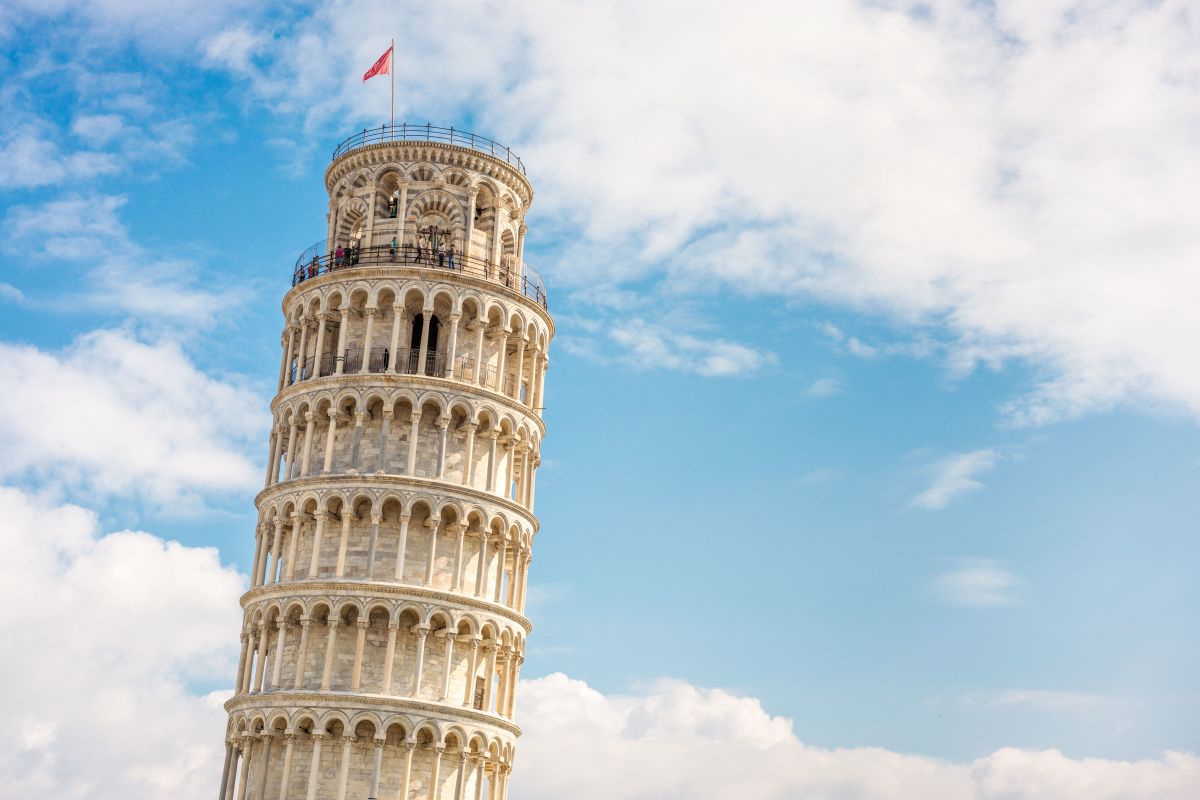
Leaning Tower of Pisa, Italy
The Leaning Tower of Pisa is an ancient monument that standsdiagonallyin Pisa, Italy. Construction for the tower started way back in 1173 and took 199 years to complete! That means only sons of grandsons of the architects and engineers who started the construction got to see the completed tower. Construction was interrupted by wars, debts, and also by the engineers who tried to stop the structure from leaning. Later on, engineers had to be grateful for these interruptions even from their graves. Had there been no interruptions, the whole tower would have toppled overand all efforts would have gone to waste. The interruptions provided enough time for the soil to become compact and support the heavy structure. But it still leans.Originally, the tower was built to be a church’s bell tower. The most obvious question that anyone may ask is “Why does the tower tilt on one side like it’s falling?” It is because the tower was built on loosely packed subsoil that cannot support a lot of weight. It started leaning as soon as construction reached the 3rd story. The tower has ever since been falling (slowly) at a yearly rate of one to two millimeters.Due to themassive weight of 14,500 tons and vertical height of 180.45 feet (55 meters), the rate of fall is likely to increase as the years go by. Eventually, the Leaning Tower of Pisa will be the Fallen Tower of Pisa. So far, it has been slowly falling for hundreds of years.
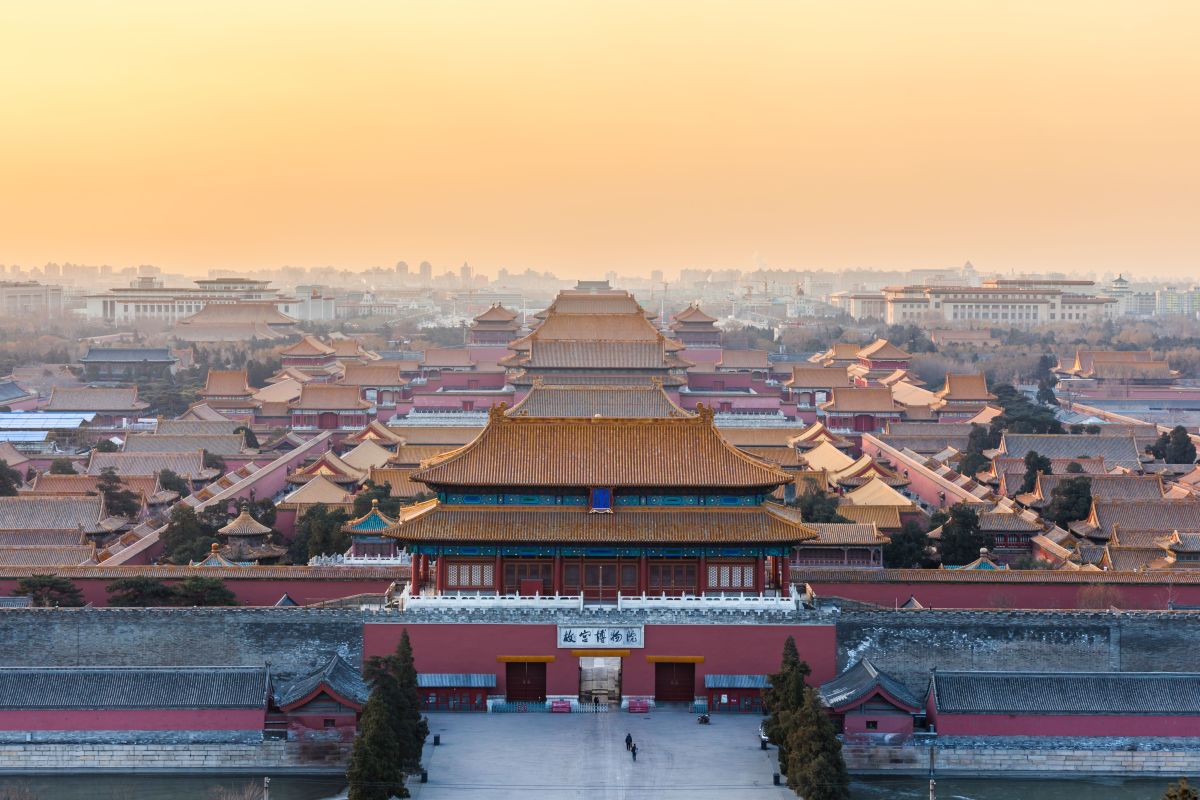
Forbidden City, Beijing
The Forbidden City, also known as the Palace Museum, lies in the city center of Beijing, and was once the Chinese imperial palace of the Ming and Qing Dynasties (1368 - 1911). It was listed as a World Heritage Site in 1987 and is the largest, best-preserved ancient timber-built palace complex in the world. Constructed between 1406 and 1420 during the reign of Emperor Chengzu of the Ming Dynasty (1368-1644), the Forbidden City was home to 24 emperors and their families and acted as the ceremonial and political center of ancient Chinese government throughout 500 years. After the Last Emperor of China left the palace, it later became a museum open to the public in 1925. Since then, the Forbidden City is no longer ‘forbidden’, and now ordinary people are able to take a virtual trip in time to see the secrets and luxury of imperial life. Rectangular in shape, the Forbidden City is enormous, covering an area of 72 hectares, and boasting more than 9,000 bays of rooms. It is divided into two parts – the Outer Court for national affairs in the south and the Inner Court as living quarters in the north. It is not only an immense architectural masterpiece, but also a treasury housing a unique collection of 1.8 million pieces of art, including ancient calligraphy and painting, imperial artifacts, ancient books and archives. A must-see in Beijing and the world’s most visited museum, it is worth spending half to one day to visit the Forbidden City and appreciate the precious cultural heritage of China.
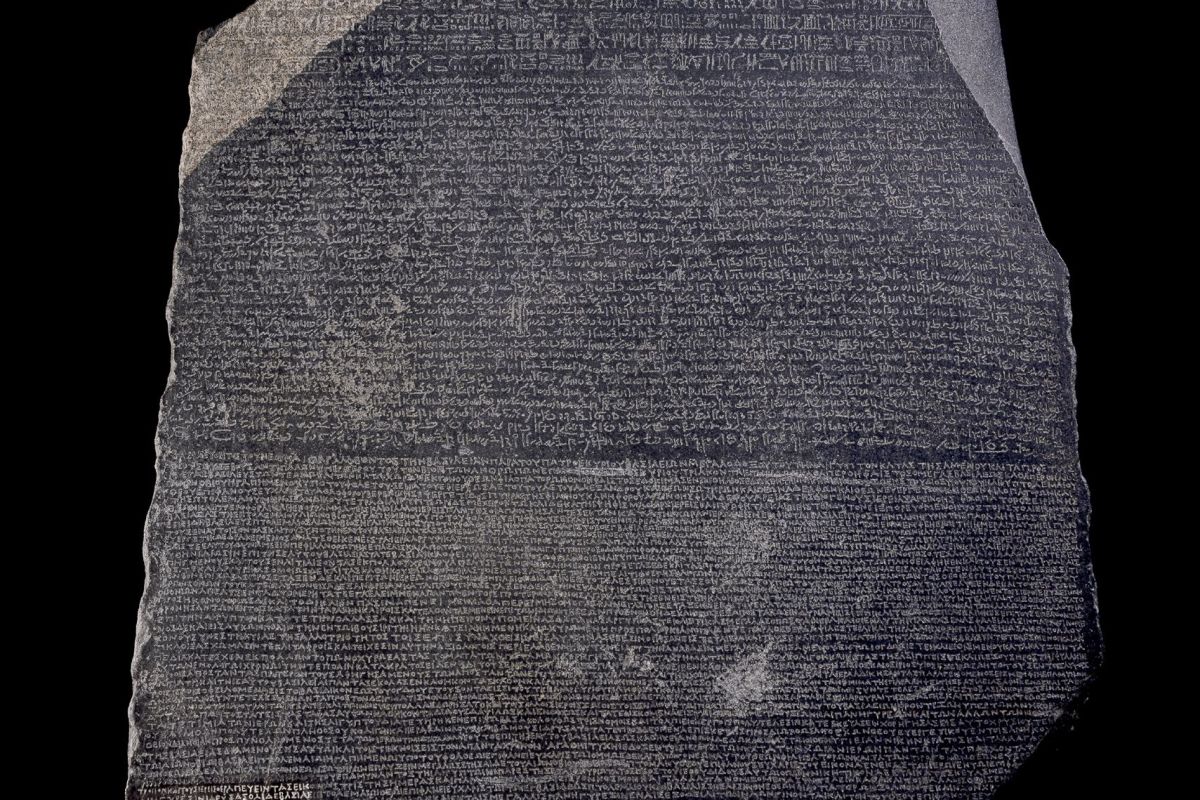
Rosetta Stone, British Museum, London
The Rosetta Stone, which dates back to 196 BC, was found near the Egyptian village of el-Rashid (or Rosetta) in 1799 by Napoleon's army. Today the stone, part of a larger slab, lies in Room 4 at the British Museum. Peer closely and you'll see the inscription carved on its surface in three different scripts (hieroglyphic, demotic and Greek), which was vital in helping experts decipher Egyptian hieroglyphs – knowledge of which had been lost. The message on the stone is a decree affirming the support of priests from a temple in Memphis, Egypt, for King Ptolemy V on the first anniversary of his coronation. It would have been one of a series of stone copies made to put in every temple in Egypt. The Rosetta Stone is just one of many truly exceptional objects on display at the British Museum. Other highlights include the ancient Greek Parthenon sculptures, the Mummy of Katebet and the huge Easter Island statue.

Disneyland Resort, Anaheim, California
Disneyland Park, originally Disneyland, is the first of two theme parks built at the Disneyland Resort in Anaheim, California, opened on July 17, 1955. It is the only theme park designed and built to completion under the direct supervision of Walt Disney. It was originally the only attraction on the property; its official name was changed to Disneyland Park to distinguish it from the expanding complex in the 1990s. It was the first Disney theme park. Walt Disney came up with the concept of Disneyland after visiting various amusement parks with his daughters in the 1930s and 1940s. He initially envisioned building a tourist attraction adjacent to his studios in Burbank to entertain fans who wished to visit; however, he soon realized that the proposed site was too small. After hiring a consultant to help him determine an appropriate site for his project, Disney bought a 160-acre (65 ha) site near Anaheim in 1953. Construction began in 1954 and the park was unveiled during a special televised press event on the ABC Television Network on July 17, 1955. .

Tulum, Mexico
Tulum is a town on the Caribbean coastline of Mexico’s Yucatán Peninsula. It’s known for its beaches and well-preserved ruins of an ancient Mayan port city. The main building is a large stone structure called El Castillo (castle), perched on a rocky cliff above the white sand beach and turquoise sea. Near the ruins is the Parque Nacional Tulum, a coastal area with mangroves and cenotes (natural limestone sinkholes).
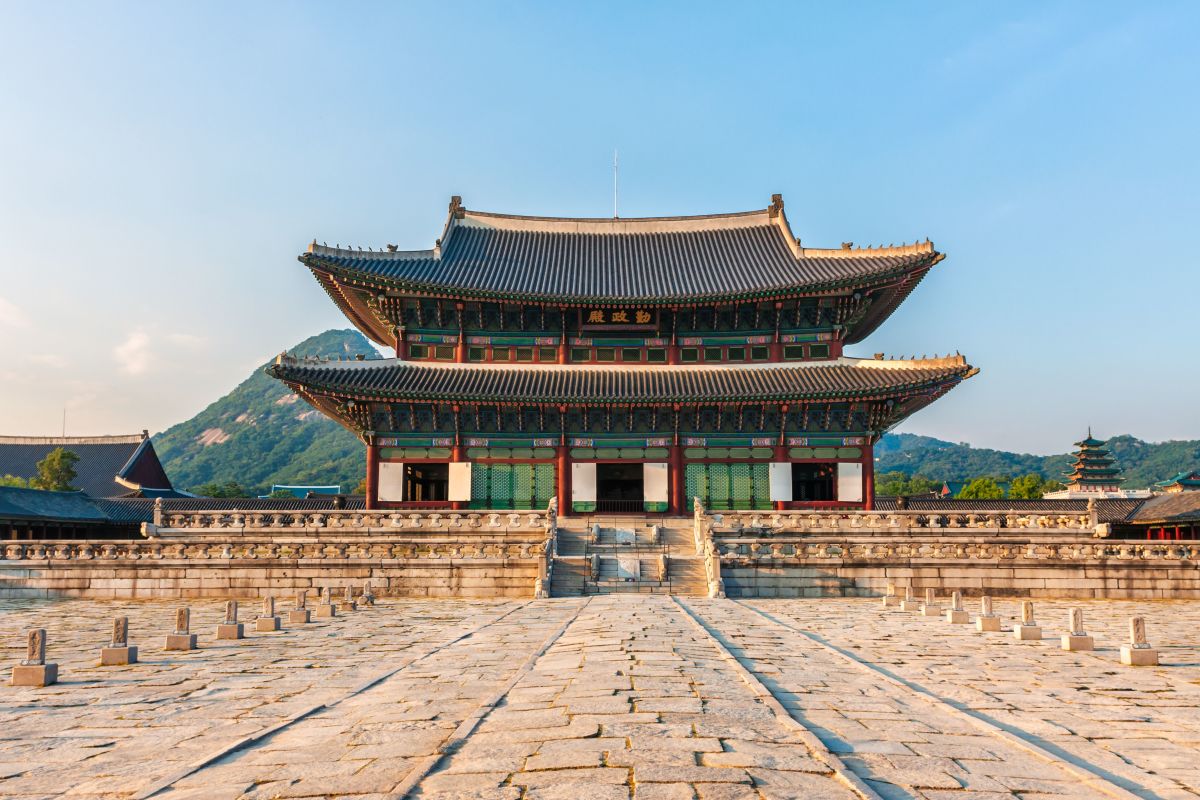
Gyeongbokgung Palace, Seoul, South Korea
Gyeongbokgung Palace, the "Palace Greatly Blessed by Heaven" was the first palace built by the Joseon founder in 1395. This is the largest of all five grand palaces built in the Joseon Dynasty, remaining in Seoul. The palace is beautiful for visits in all four distinct seasons in Korea. Gyeongbokgung Palace was the first and largest of the royal palaces built during the Joseon Dynasty. Built in 1395, Gyeongbokgung Palace was located at the heart of newly appointed capital of Seoul (then known as Hanyang) and represented the sovereignty of the Joseon Dynasty. The largest of the Five Grand Palaces (the others being Gyeonghuigung Palace, Deoksugung Palace, Changgyeonggung Palace, Changdeokgung Palace), Gyeongbokgung served as the main palace of the Joseon Dynasty. The Korean government has invested much time and effort into rebuilding, restoring, and maintaining the palace for future generations. These efforts include work to rebuild and restore the buildings that were destroyed during the Japanese occupation. Visitors to Gyeongbokgung can also visit the National Palace Museum of Korea and the National Folk Museum of Korea as they are located on the palace grounds.

Walt Disney World Resort, Orlando
The Walt Disney World Resort, also called Walt Disney World and Disney World, is an entertainment complex in Bay Lake and Lake Buena Vista, Florida, in the United States, near the cities of Orlando and Kissimmee. Opened on October 1, 1971, the resort is owned and operated by Disney Parks, Experiences and Products, a division of The Walt Disney Company. It was first operated by Walt Disney World Company. The property covers nearly 25,000 acres (39 sq mi; 101 km2), of which half has been used. The resort comprises four theme parks (consisting of Magic Kingdom, Epcot, Disney's Hollywood Studios, and Disney's Animal Kingdom), two water parks, 27 themed resort hotels, nine non-Disney hotels, several golf courses, a camping resort, and other entertainment venues, including the outdoor shopping center Disney Springs.

Iguazu Falls, Brazil and Argentina
The Iguazu falls are waterfalls of the Iguazu River forming the border betweem the Misiones state in Argentina and the Brazilian state of Paraná. The 275 individual drops stretching for 2700m make up the largest waterfall system in the world. The falls divide the river into the upper and lower Iguazu. The river flows through Brazil for most of its course but, most of the falls are on the Argentine side. Below where it joins the San Antonio River, the Iguazu River forms the boundary between Argentina and Brazil. Visitors can reach the falls from Foz do Iguaçu in Brazil and Puerto Iguazú in the Argentina, or from Ciudad del Este in Paraguay. The Iguazu Falls are owned by the two UNESCO World Heritage Sites: the Iguazú National Park in Argentina and the Iguaçu National Park in Brazil.

Vatican City
Vatican City, a city-state surrounded by Rome, Italy, is the headquarters of the Roman Catholic Church. It's home to the Pope and a trove of iconic art and architecture. Its Vatican Museums house ancient Roman sculptures such as the famed “Laocoön and His Sons” as well as Renaissance frescoes in the Raphael Rooms and the Sistine Chapel, famous for Michelangelo’s ceiling.

Sydney Opera House, Sydney
A masterpiece of architecture, the Sydney Opera House is one of the world’s most famous buildings. You can take a photo on the steps of the Opera House, explore it majestic exterior and splendid interior on daily tours, and enjoy performances held under its iconic white sails. On the edge of Sydney Harbour, one of the world’s great natural harbours, the Sydney Opera House is a UNESCO World Heritage site. It was evaluated as “one of the indisputable masterpieces of human creativity, not only in the 20th century but in the history of humankind”. The Sydney Opera House hosts 1,600 performances every year including ballet, opera, theatre, dance, music and comedy as well as children’s shows and more. You can combine shows with delicious food at the Opera Kitchen and Bennelong Restaurant, or enjoy pre-show drinks at the Opera Bar. For daily tours, join the Sydney Opera House Tour, the Backstage Tour or the Tour and Tasting Plate, which includes a guided tour and a three-tier gourmet tasting plate at the Opera Kitchen. Foreign language tours are in Mandarin, Korean, Japanese, French, Spanish and German.

Petra, Jordan
The spectacular sandstone city of Petra was built in the 3rd century BC by the Nabataeans, who carved palaces, temples, tombs, storerooms and stables from the soft stone cliffs. Today it is a World Heritage Site that needs little introduction; suffice to say, no visit to Jordan is complete without at least two days spent exploring the remarkable Ancient City. It is approached through the adjacent town of Wadi Musa, which is the accommodation and transport hub. It was from Petra that the Nabataeans, a community of master builders whose skills included hydraulic engineering, iron production and copper refining, commanded the trade routes from Damascus to Arabia, profiting by the taxes paid on the caravans that passed through Nabataean territory. An earthquake in AD 555 is the most likely cause of the city's demise, but thankfully many of Petra's most impressive structures remain intact, making it a treasure trove of architectural surprises, hidden along hiking trails of various lengths and difficulties..

Mona Lisa, Louvre Museum, Paris
The Louvre Museum is the world's largest art museum and a historic monument in Paris, France. A central landmark of the city, it is located on the Right Bank of the Seine in the city's 1st arrondissement (district or ward). Approximately 38,000 objects from prehistory to the 21st century are exhibited over an area of 72,735 square meters (782,910 square feet).[4] In 2019, the Louvre received 9.6 million visitors, making it the most visited museum in the world. The museum is housed in the Louvre Palace, originally built as the Louvre castle in the late 12th to 13th century under Philip II. Remnants of the fortress are visible in the basement of the museum. Due to urban expansion, the fortress eventually lost its defensive function, and in 1546 Francis I converted it into the primary residence of the French Kings.The building was extended many times to form the present Louvre Palace. In 1682, Louis XIV chose the Palace of Versailles for his household, leaving the Louvre primarily as a place to display the royal collection, including, from 1692, a collection of ancient Greek and Roman sculpture. In 1692, the building was occupied by the Académie des Inscriptions et Belles-Lettres and the Académie Royale de Peinture et de Sculpture, which in 1699 held the first of a series of salons. The Académie remained at the Louvre for 100 years. During the French Revolution, the National Assembly decreed that the Louvre should be used as a museum to display the nation's masterpieces.

Terra Cotta Warriors, Xian, China
The Terracotta Army isn't just Xi'an's premier sight: it's one of the most famous archaeological finds in the world. This subterranean life-size army of thousands has silently stood guard over the soul of China's first unifier for more than two millennia. Either Qin Shi Huang was terrified of the vanquished spirits awaiting him in the afterlife or, as most archaeologists believe, he expected his rule to continue in death as it had in life. Whatever the case, the guardians of his tomb – who date from the 3rd century BC – today offer some of the greatest insights we have into the world of ancient China. The discovery of the army of warriors was entirely fortuitous. In 1974 peasants drilling a well uncovered an underground vault that eventually yielded thousands of terracotta soldiers and horses in battle formation. Throughout the years the site became so famous that many of its unusual attributes are now well known; in particular the fact that no two soldier's faces are alike.

Borobudur Temple, Java, Indonesia
The Borobudur Temple Compounds is one of the greatest Buddhist monuments in the world, and was built in the 8th and 9th centuries AD during the reign of the Syailendra Dynasty. The monument is located in the Kedu Valley, in the southern part of Central Java, at the centre of the island of Java, Indonesia. The main temple is a stupa built in three tiers around a hill which was a natural centre: a pyramidal base with five concentric square terraces, the trunk of a cone with three circular platforms and, at the top, a monumental stupa. The walls and balustrades are decorated with fine low reliefs, covering a total surface area of 2,520 m2. Around the circular platforms are 72 openwork stupas, each containing a statue of the Buddha. The vertical division of Borobudur Temple into base, body, and superstructure perfectly accords with the conception of the Universe in Buddhist cosmology. It is believed that the universe is divided into three superimposing spheres, kamadhatu, rupadhatu, and arupadhatu, representing respectively the sphere of desires where we are bound to our desires, the sphere of forms where we abandon our desires but are still bound to name and form, and the sphere of formlessness where there is no longer either name or form.
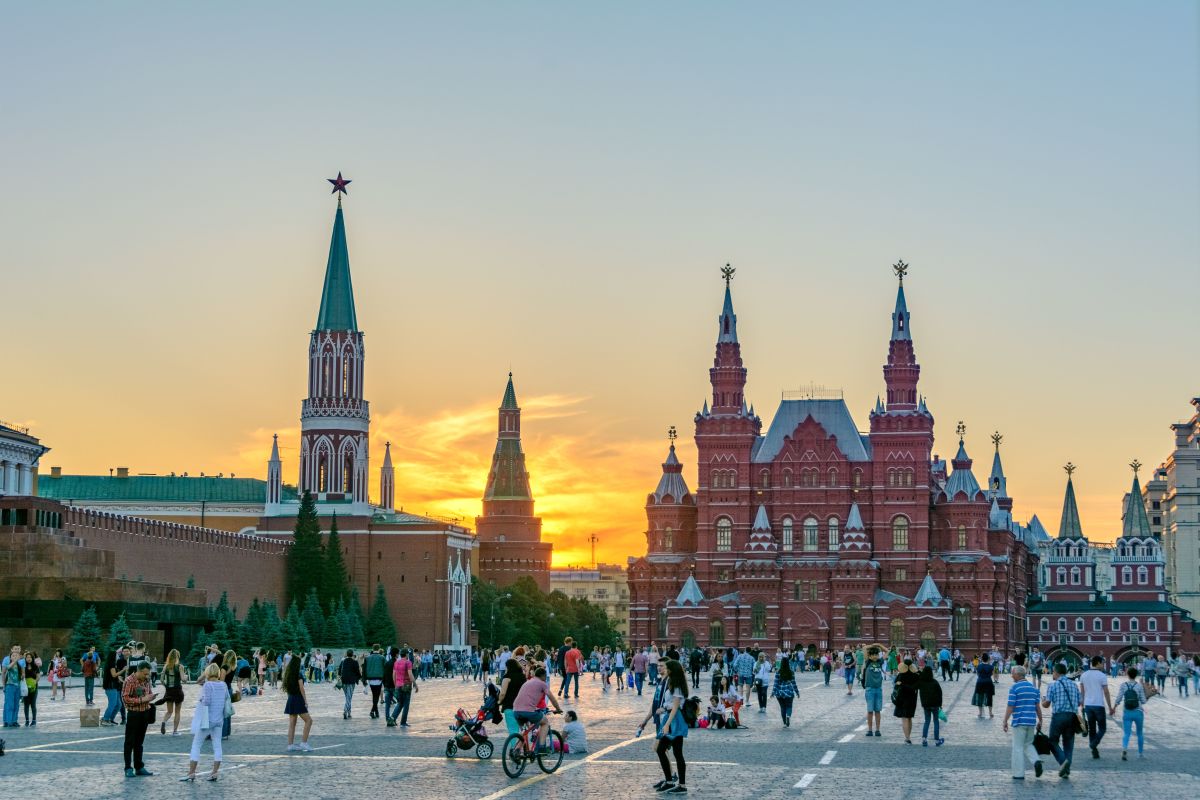
Red Square, Moscow
Red Square is the largest and most famous square in Russia. It has a magnetic pull for all visitors to Moscow. Standing in Red Square, you can see the most significant buildings in the capital: the Kremlin, GUM department store, the State History Museum, Lenin's Mausoleum and of course, St Basil’s Cathedral. The bright domes bloom like an elaborate stone flower planted by the architects of the 16th century. All the major streets of Moscow radiate from here. Red Square is the central square of Moscow and the symbolic center of all Russia. Red Square has always been the main square of the city, and its history dates back to the 1490s when a new red brick Kremlin was built in Moscow. The east side of the fortification was vulnerable since it was not protected by the rivers nor any other natural barriers. This area outside the walls was cleared in order to create a field of fire for shooting, and became Red Square. Merchants from all over the world came to trade here. The Square turned into a big market. Public Criers announced tsars’ decrees and people came to Red Square to hear the news. On days of great church festivals there were religious processions here, turning the square into an open-air church. .

Jemaa el-Fna, Marrakech, Morocco
The Jemaa el-Fnaa is Marrakech’s main square and the most important part of the medina. Here, inhabitants and tourists gather both during the day and night to have something to eat, shop or observe the various shows taking place. During the day During the day the square is full of surprising sights, from monkey trainers who have trained the apes to climb all over tourists to snake charmers, as well as dentists that expose the teeth they have recently extracted. In Jemaa el-Fnaa, you will also find numerous stands selling orange juice, spices, mint leaves and snails.At night At dusk, Marrakech’s main square transforms and the morning stalls disappear to give room to food stands where visitors can have dinner surrounded by Moroccan musicians playing traditional music and various other shows.

Taj Mahal, Agra, India("A Monumental Ode to Love")
One of the seven wonders of the world, Taj Mahal is located on the banks of River Yamuna in Agra. It was built by the Mughal Emperor Shah Jahan as a memorial for his third wife, Mumtaz Mahal. It also houses the tomb of Shah Jahan himself. Constructed entirely out of white marble in the 17th century, Taj Mahal is one of the most beautiful monuments in the world. Every year visitors numbering more than the entire population of Agra pass through the magnificent gates to catch a glimpse of this breathtaking monument! A UNESCO World Heritage Site, the Taj Mahal stands for the Crown of Palaces in the Persian language. The tomb is laid out in a rectangular shape and can be approached through a massive gateway which has an arch and alcoves on either side of it. There are water channels and fountains in the entrance which makes the monument even more spectacular. The reflection of this majestic spectacle in the Yamuna is almost poetic in its perfection! Covering an area of approximately 42 Acres, the construction of the Taj Mahal began in 1631 and it took 17 years before it was completed in 1648! It was constructed using white marble obtained from Makrana in Rajasthan.

Meiji Shrine, Tokyo
Surrounded by a lush green forest right in the heart of Tokyo , this Shinto grand shrine is dedicated to Emperor Meiji (1852-1912) and Empress Shoken, modern Japan's first emperor and empress.The shrine was built in 1920 as a memorial to the country's first modern-day royal rulers, Emperor Meiji and Empress Shoken. An early proponent of the ideologies that would come to define Tokyo, Emperor Meiji revolutionized modern-day Japan by pushing for a more westernized society, leading the nation in building relationships with some of the world's great powers. Like many other major sites in Tokyo , the shrine's buildings were destroyed during World War II but rebuilt following a public fundraising effort.Passing Harajuku Station, you'll be led into the forest down a winding pathway to the shrine's main grounds. The short walk to the front gates is sheltered by towering trees that block out the sights and sounds of the city outside. Passing under the torii gate marking the beginning of the shrine grounds, you'll find it hard to believe you're in the middle of one of the world's busiest cities.
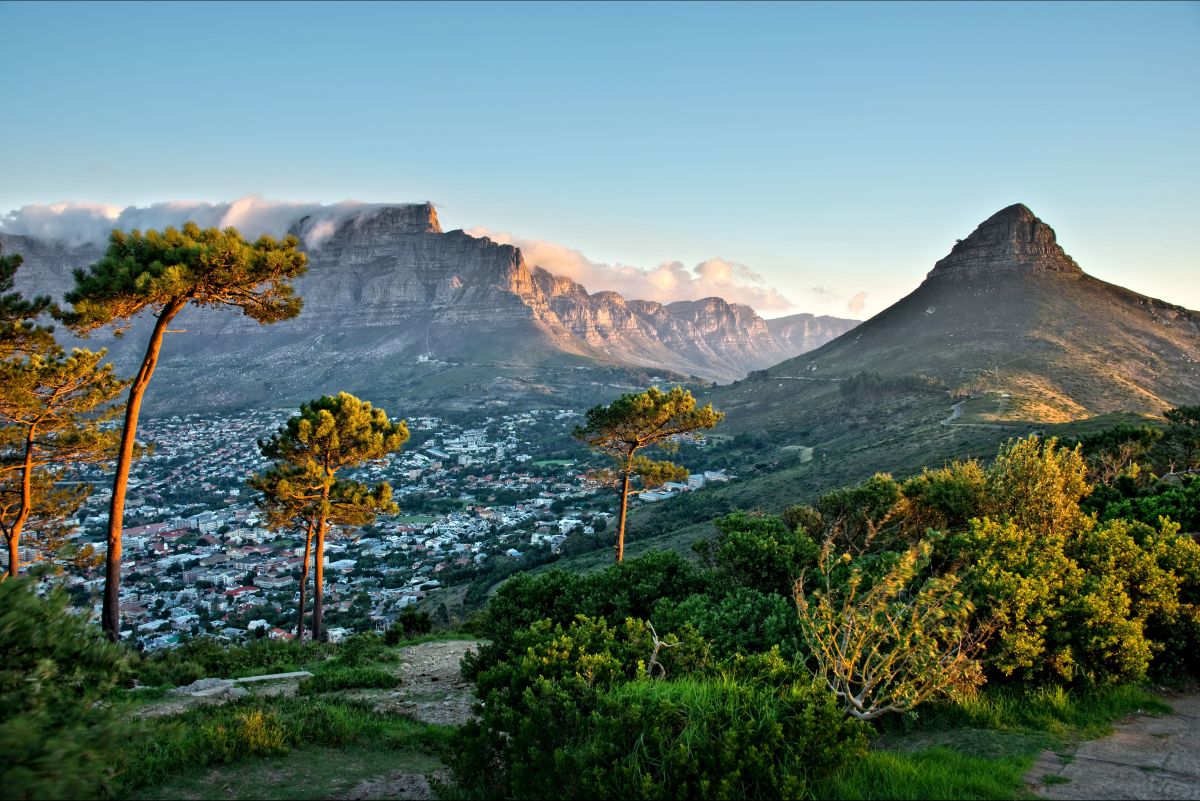
Table Mountain, Cape Town, South Africa
Whether it is covered in a blanket of moody clouds or showing off against a crisp cloudless blue sky, Table Mountain is always spectacular. Cape Town locals are pretty fond of the mountain that looms over their city… and with good reason! Table Mountain, which is home to the richest, yet smallest floral kingdom on earth, was voted one of the New Seven Wonders of the World in 2011. Flanked by Devil’s Peak and Lion’s Head, Table Mountain makes up the northern end of the Cape Fold Mountain range. It’s hard to imagine, but the mountain’s distinctive flat top – a three-kilometre level plateau – was once the bottom of a valley! The mountain was given its name — Taboa do Cabo (Table of the Cape) — by Antonio de Saldahna after he climbed up Platteklip Gorge in 1503. Legend has it that the tablecloth of clouds that pours over the mountain when the southeaster blows is the result of a smoking contest between the devil and a retired sea captain called Jan van Hunks.
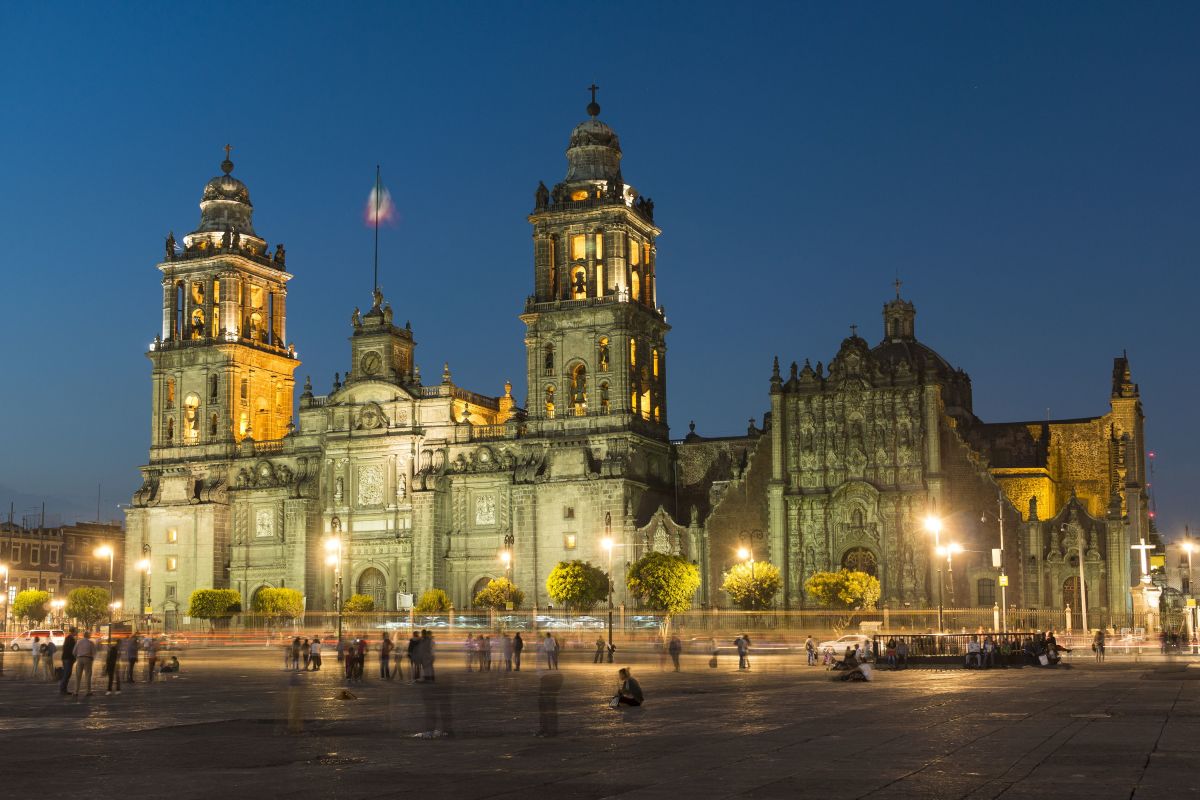
Zócalo, Mexico City
The heart of Mexico City is the Plaza de la Constitución. Residents began calling it the Zócalo, meaning ‘base,’ in the 19th century, when plans for a major monument to independence went unrealized, leaving only the pedestal. Measuring 220m from north to south, and 240m from east to west, it’s one of the world’s largest city squares. The ceremonial center of Aztec Tenochtitlán, known as the Teocalli, lay immediately northeast of the Zócalo. Today the Zócalo is home to the powers that be. On its east side is the Palacio Nacional (the presidential palace), on the north is the Catedral Metropolitana, and on the south are the city government offices. Jewelry shops and extravagant hotels line the arcade known as the Portal de Mercaderes on the plaza’s west side.
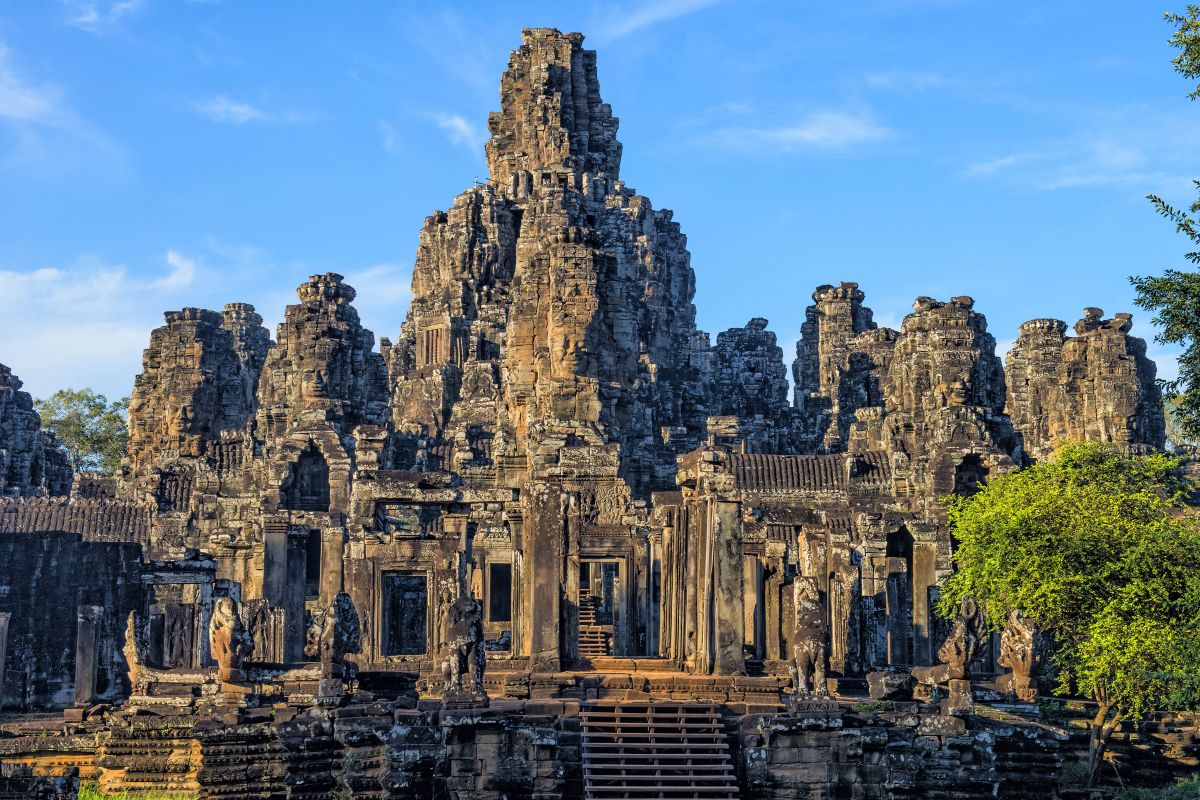
Angkor Archaeological Park, Siem Reap, Cambodia
Siem

Galapagos Islands, Ecuador
The Galapagos Islands area situated in the Pacific Ocean some 1,000 km from the Ecuadorian coast. This archipelago and its immense marine reserve is known as the unique ‘living museum and showcase of evolution’. Its geographical location at the confluence of three ocean currents makes it one of the richest marine ecosystems in the world. Ongoing seismic and volcanic activity reflects the processes that formed the islands. These processes, together with the extreme isolation of the islands, led to the development of unusual plant and animal life – such as marine iguanas, flightless cormorants, giant tortoises, huge cacti, endemic trees and the many different subspecies of mockingbirds and finches – all of which inspired Charles Darwin’s theory of evolution by natural selection following his visit in 1835.

Tokyo Disney Resort, Urayasu, Japan
The Tokyo Disney Resort is a theme park and vacation resort located in Urayasu, Chiba, Japan, just east of Tokyo. It is owned and operated by the Oriental Land Company with a license from The Walt Disney Company.

Acropolis, Athens, Greece
The Acropolis is the most important ancient site in the Western world. Crowned by the Parthenon, it stands sentinel over Athens, visible from almost everywhere within the city. Its monuments and sanctuaries of white Pentelic marble gleam in the midday sun and gradually take on a honey hue as the sun sinks, while at night they stand brilliantly illuminated above the city. A glimpse of this magnificent sight cannot fail to exalt your spirit. Inspiring as these monuments are, they are but faded remnants of the city of Pericles, who spared no expense – only the best materials, architects, sculptors and artists were good enough for a city dedicated to the cult of Athena. It was a showcase of lavishly coloured buildings and gargantuan statues, some of bronze, others of marble plated with gold and encrusted with precious stones. The Acropolis was first inhabited in Neolithic times (4000–3000 BC). The earliest monumental buildings were constructed here during the Mycenaean era. People lived on the Acropolis until the late 6th century BC, but in 510 BC the Delphic oracle declared it the sole province of the gods.

Winter
Winter is one of the four seasons and the coldest time of the year. The days are shorter and the nights are longer. Winter comes after autumn and before spring. Winter begins at the winter solstice. In the Northern Hemisphere the winter solstice is usually December 21 or December 22. In the Southern Hemisphere the winter solstice is usually June 21 or June 22. Some animals hibernate during this season. In temperate climates there are no leaves on deciduous trees. People wear warm clothing and eat food that was grown earlier. Many places have snow in winter, and some people use sleds or skis. Holidays in winter for many countries include Christmas and New Year's Day. The name comes from an old Germanic word that means "time of water" and refers to the rain and snow of winter in middle and high latitudes.